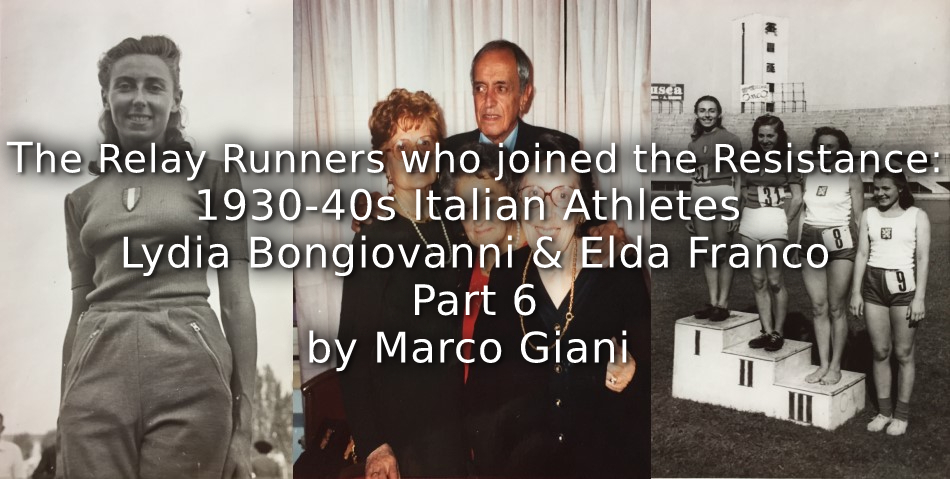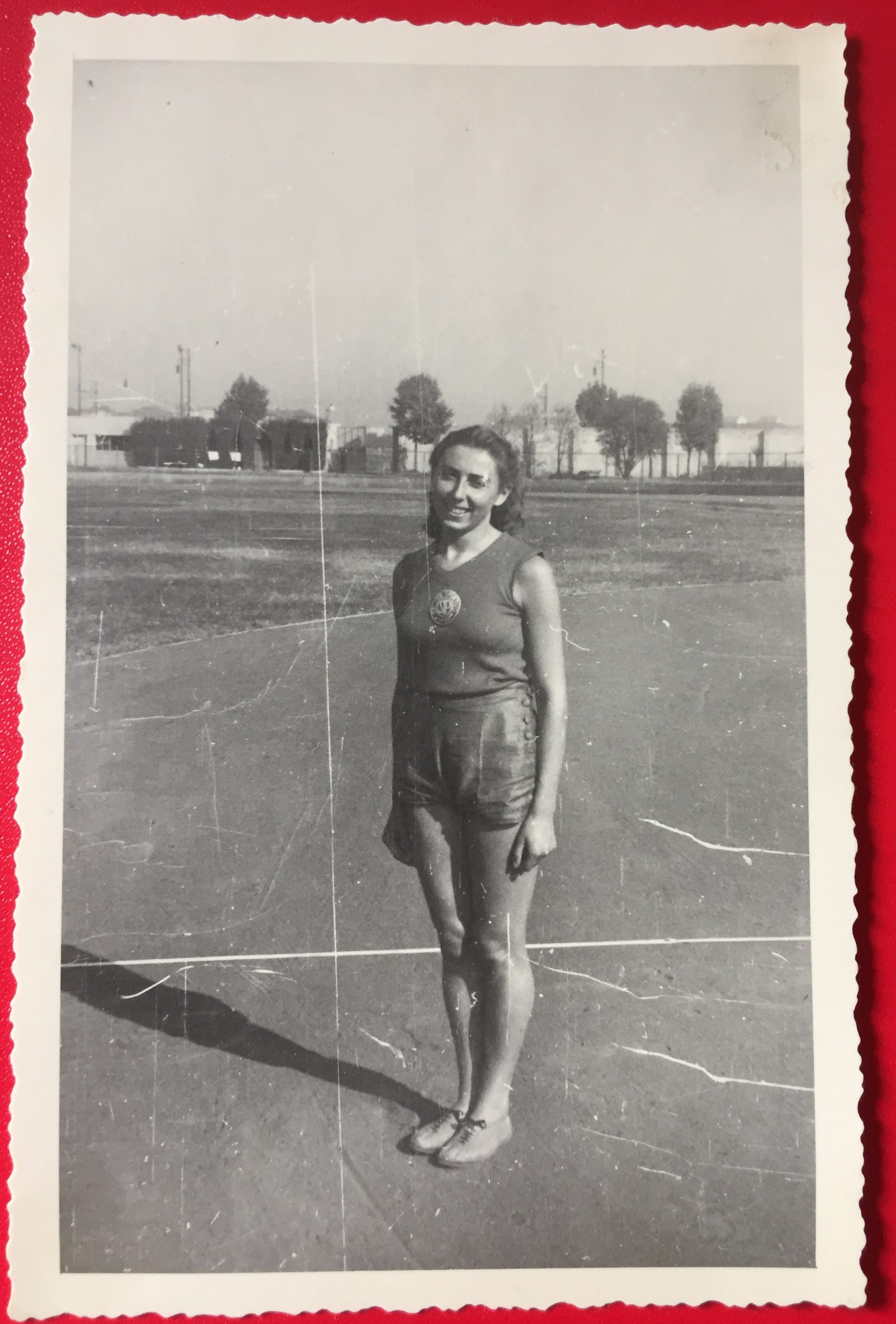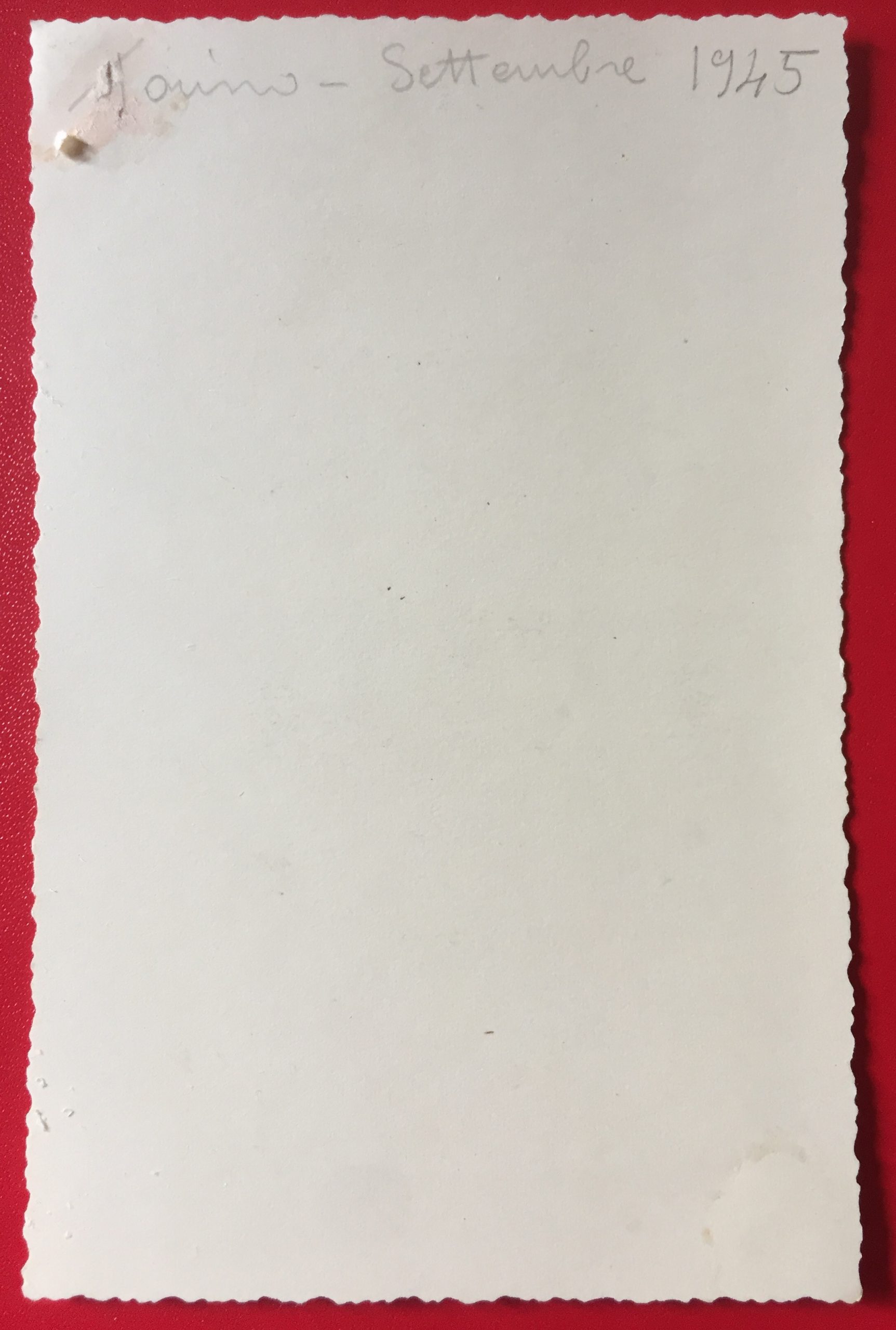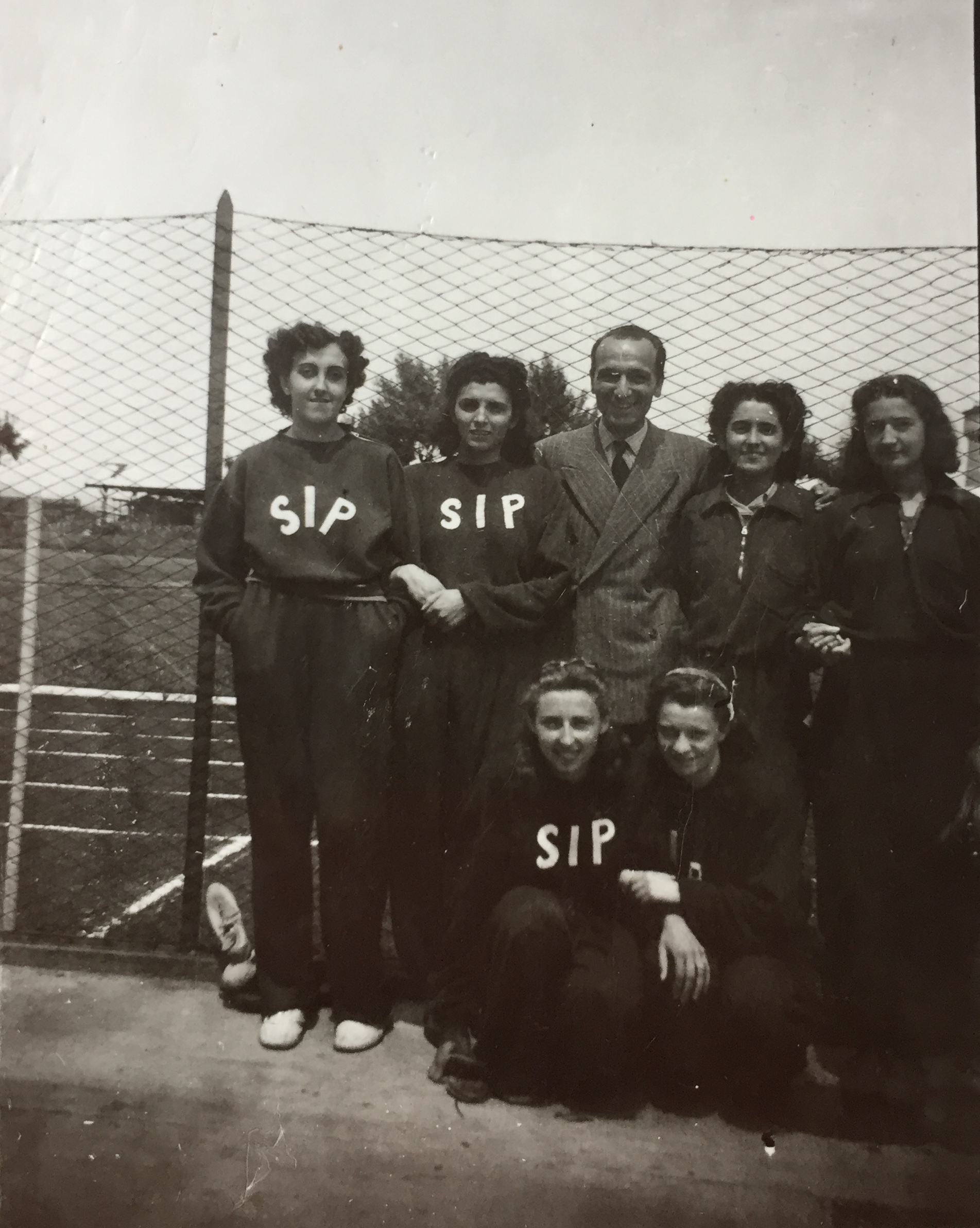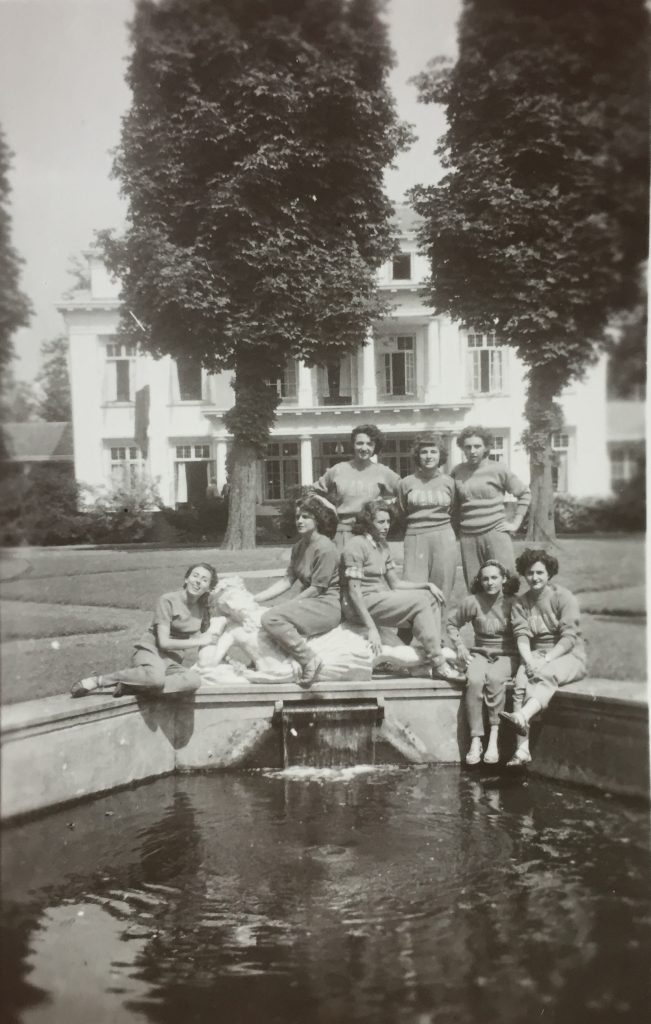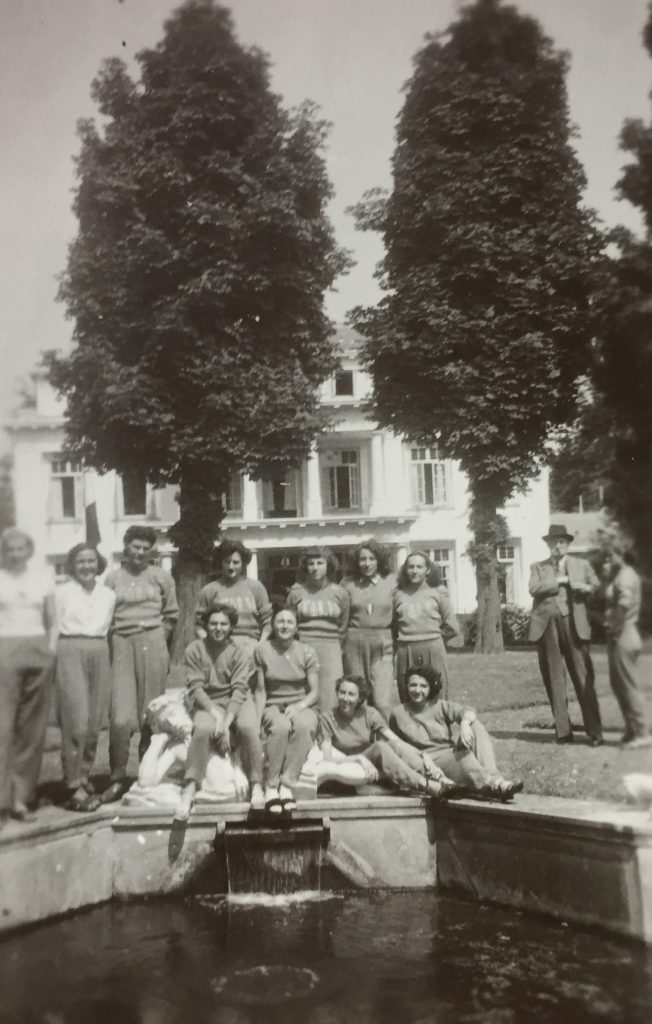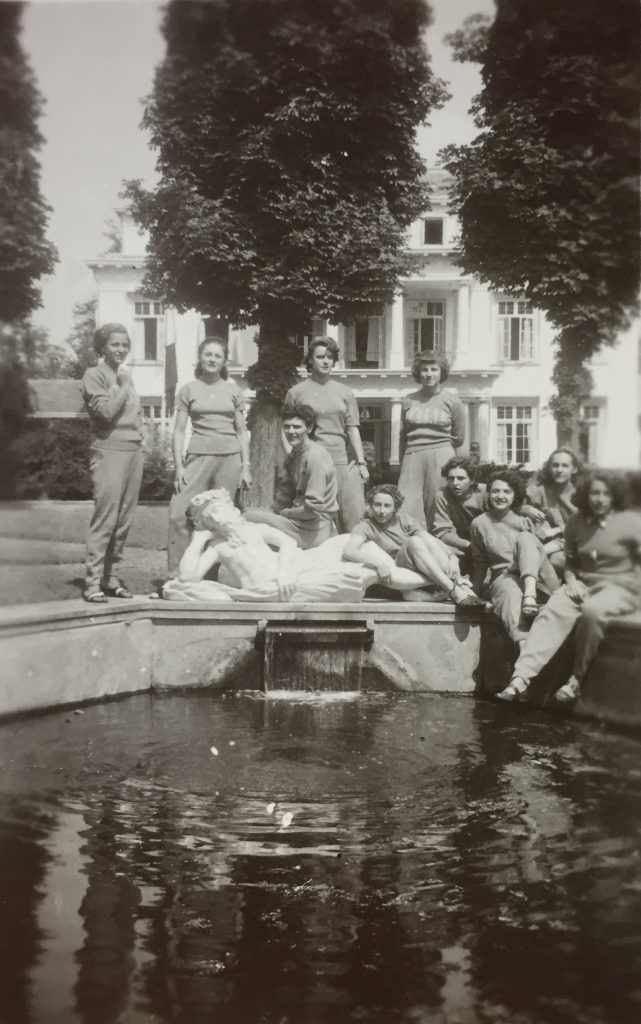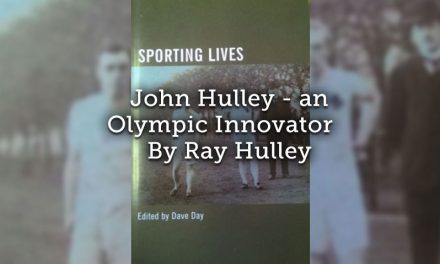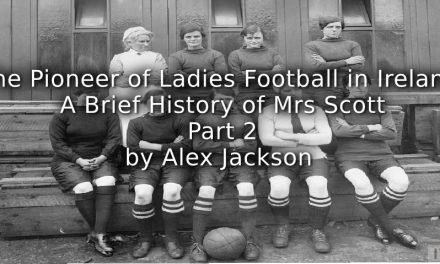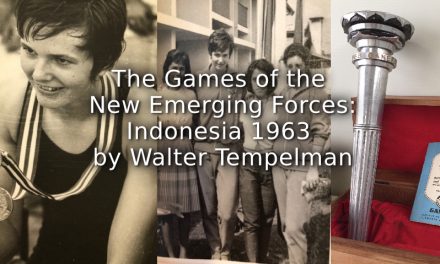The author would like to express thanks to Maura Quiriconi for having shared the personal archive of her mother, from which all pictures published in this article are taken (except for where indicated).
PLEASE NOTE – Express permission is required to reproduce ANY of the images of this article – please contact Playing Pasts or the author for more details.
To Read Part 1 Click HERE , Part 2 Click HERE , Part 3 Click HERE , Part 4 HERE and Part 5 HERE
The second Album opens with a photograph dated September 1945: Elda is smiling on the pitch, in her SIP shirt. Although it could be quite unbelievable to us, after everything that happened in the first months of that year, we should always remember that people wished to leave the war behind. Sport was the perfect way to help in start a new life.
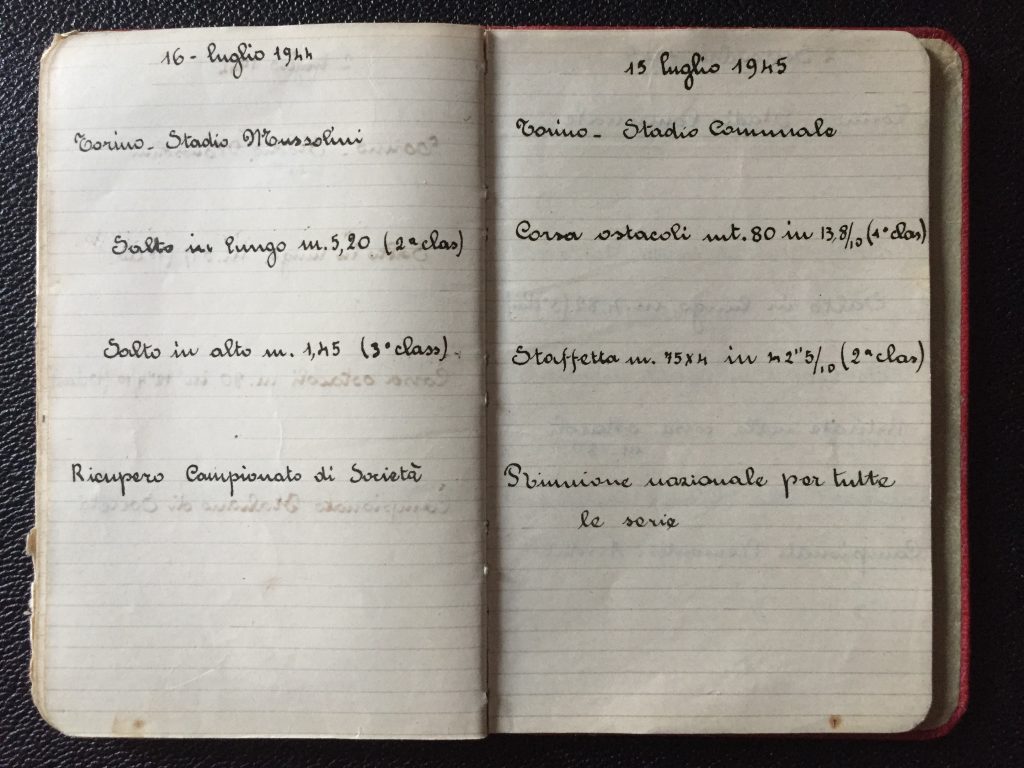
The very significant void in the Red Notebook
between July 1944 and July 1945 Elda was quite busy freeing Italy with her Resistance mates …
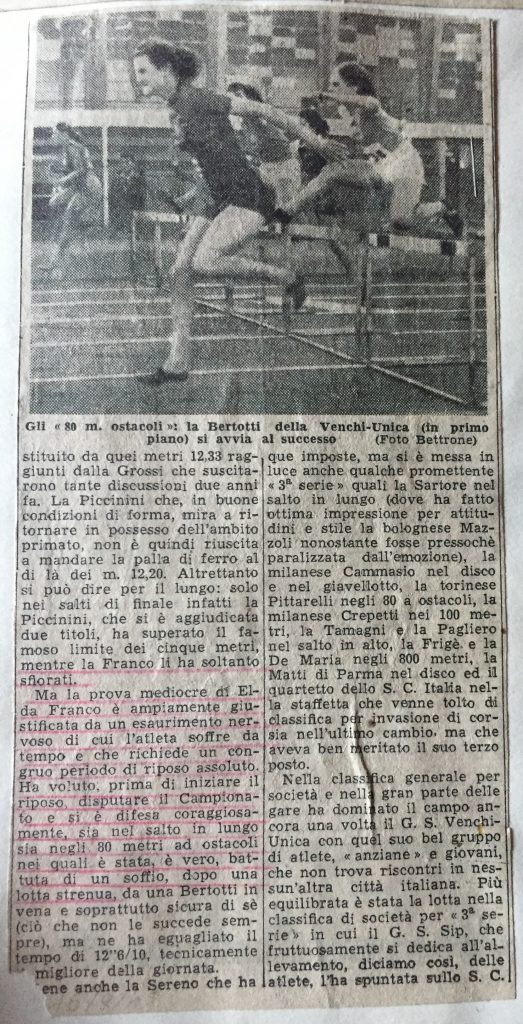
This 1945 clipping says that Elda bravely ran a 80m hurdles race, winning a silver medal, despite the nervous strain she was facing
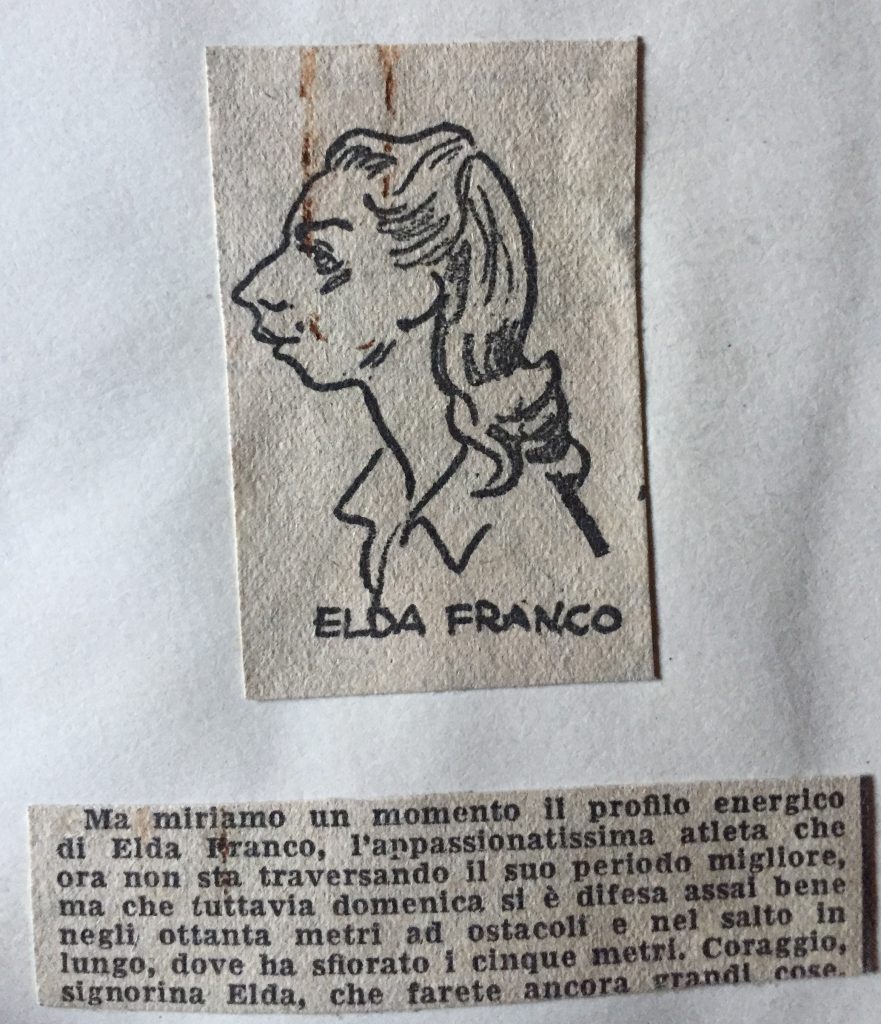
Another clipping that talks about Elda’s bad times: it wishes her a great future.
Happily Elda was able to return to the sporting life she used to spend with her SIP mates.
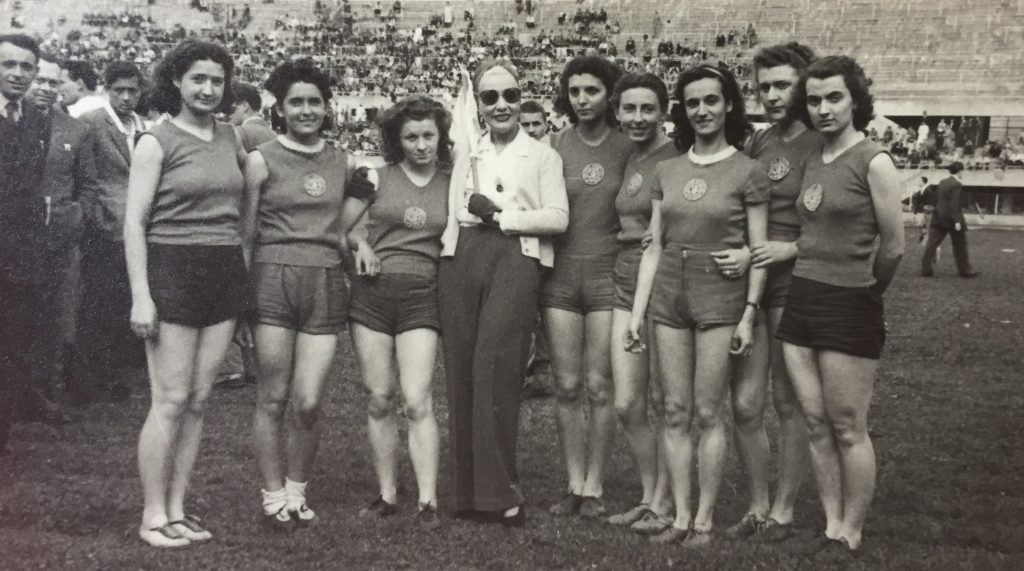
The SIP team during a 1946 charity event, with an older woman (a judge or more possibly a VIP). Elda is the 4th from right.
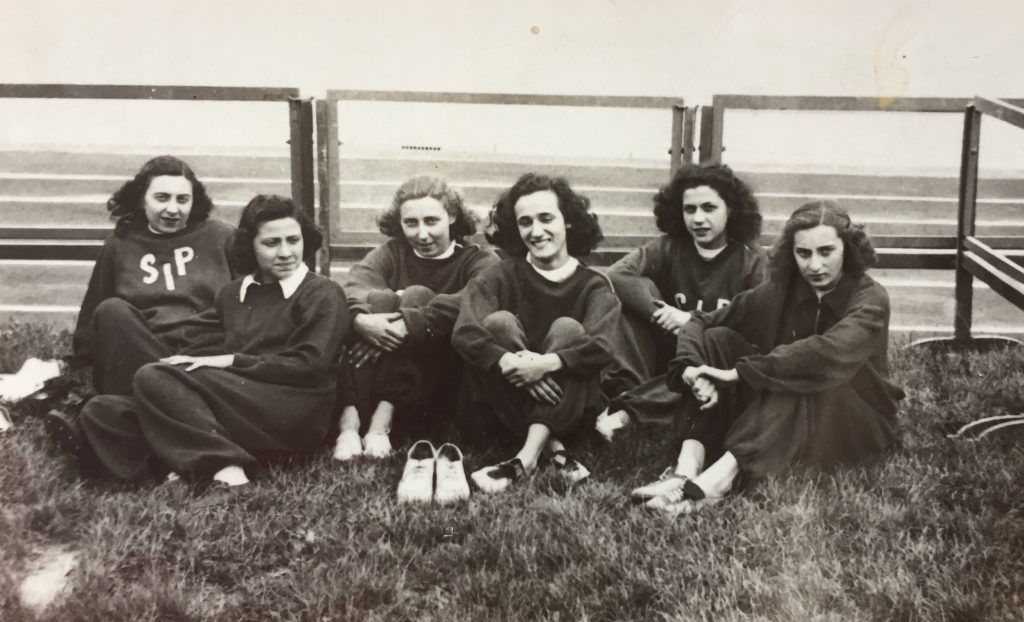
The SIP athletes in tracksuits during a break (1946)
Elda is the 3rd from left; on her right (as in the previous picture), is her friend Brunilde Leone.
The SIP athletes with a woman (the ex GS La Filotecnica athlete Rosetta Cattaneo?) and an unnamed man (Milan, 1946).
In 1946 the National team was back and 22-years old Elda, who due to the war wouldn’t have been able to compete at the 1944 (cancelled) Olympic Games, was now fully ready to play her own role in it.
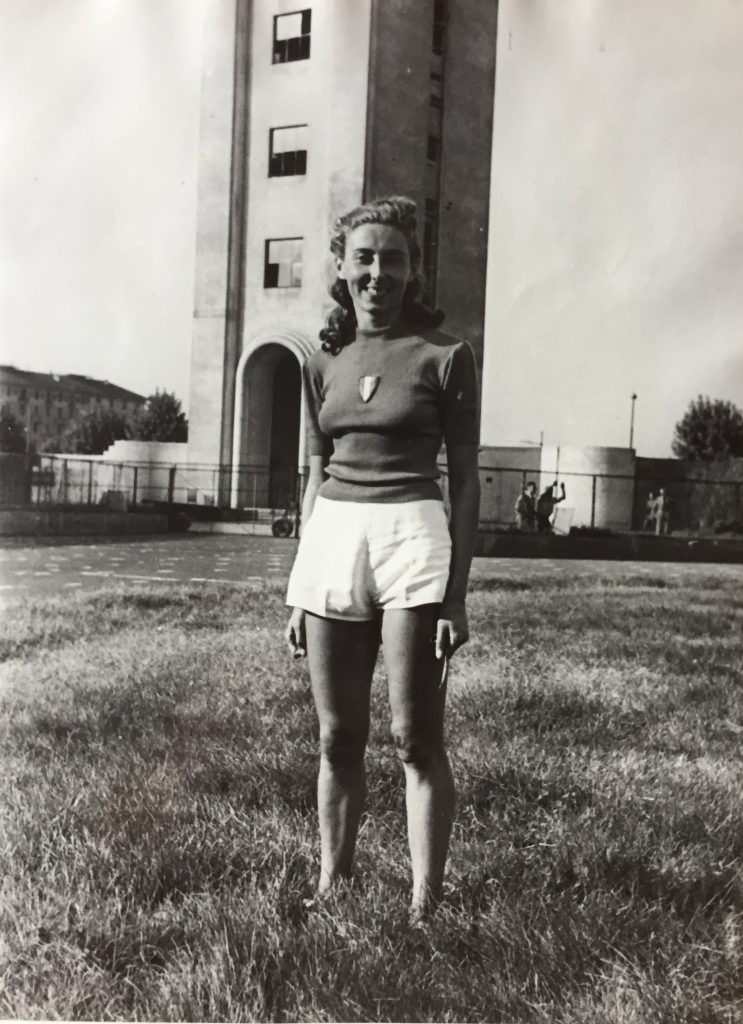
Elda wearing the National shirt in the renamed Stadio Comunale (Turin, August 1946).
Rejoining the National team meant that Elda was also to re-establish her friendship with colleagues, such as the captain Amelia Piccinini.
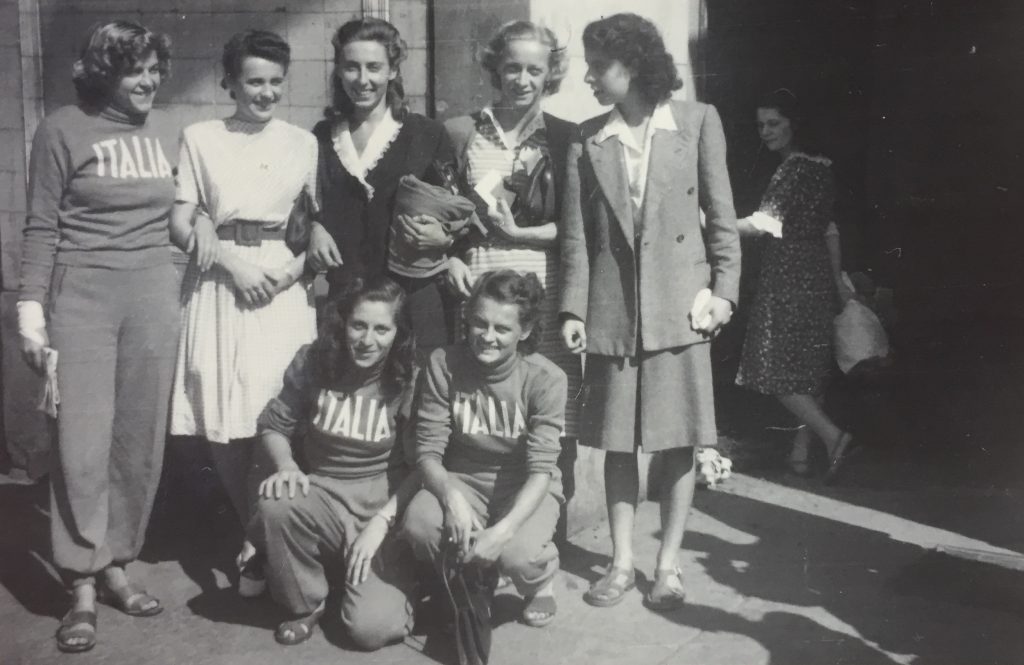
Elda (standing, 3rd left), Italia Lucchini (4th) and some Italian National Team mates (Turin, 15/09/1946).
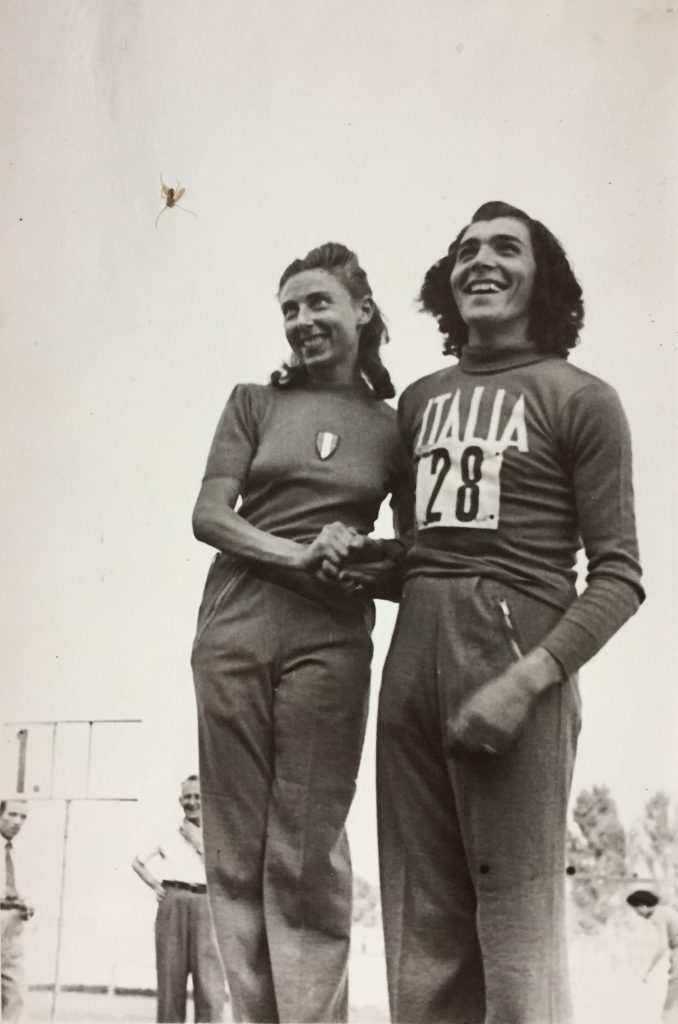
Elda and Amelia Piccinini (Turin, 15/09/1946).
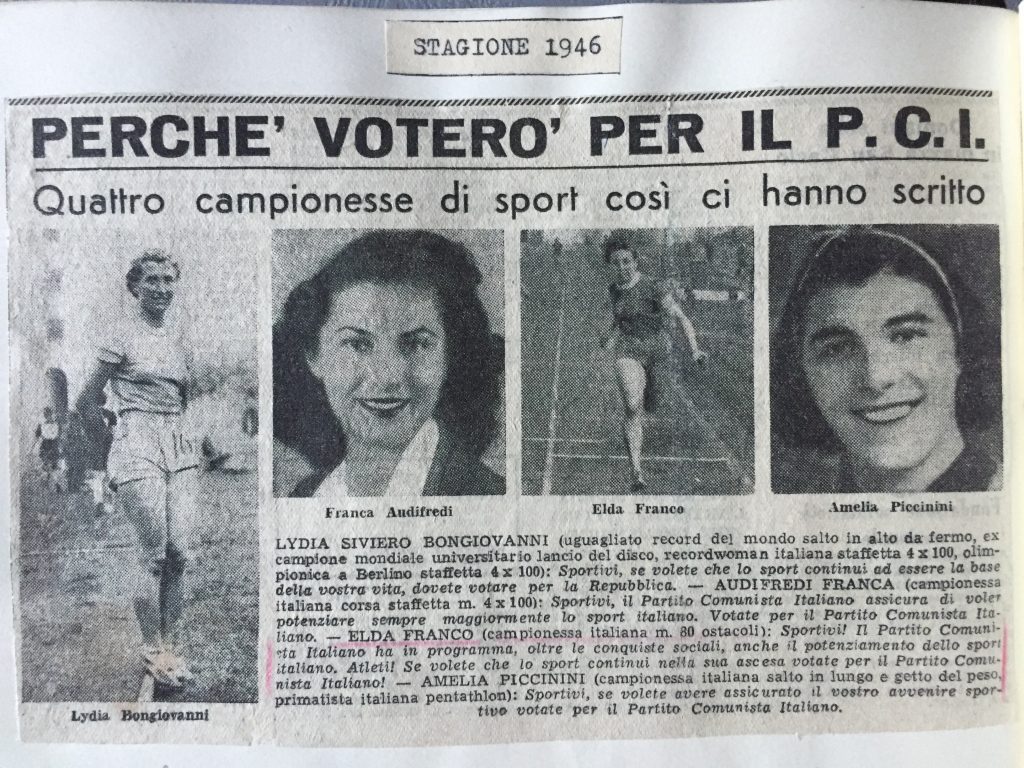
Remember that during 1946 Elda, Amelia and her trainer Lydia Bongiovanni signed this appeal for the Republic (and the Italian Communist Party).
The 3rd edition of the European Athletics Championship took place in Oslo, from 22nd to 25th August 1946. Italy won 1 gold medal (Adolfo Consolini in men’s discus), 1 silver medal (Giuseppe Tosi in the same discipline) and 2 bronze medals (Carlo Monti in men’s 100m and Amelia Piccinini in women’s shot put), ranking the 8th position, equal with Denmark … not a great result! The fact is that, as a clipping says, Elda at first was called by the Athletics Federation (FIDAL), so that she gave up her summer holidays, in order to train. Then, as she found out reading the newspaper, she hadn’t been selected(!): only throwers Elena Cordiale and Amelia Piccinini were. The journalist who penned the first clipping, written before the Oslo Championship, complained about the FIDAL decision, saying the Elda would have been able to qualify for the 80m hurdles or long jump finals (not to win medals),mainly because her German opponents wouldn’t compete in Oslo!

Then the story turned tragicomic: only the Italian delegation got on the airplane for Oslo, someone realized that there was place even for some more female athlete such as Elda.
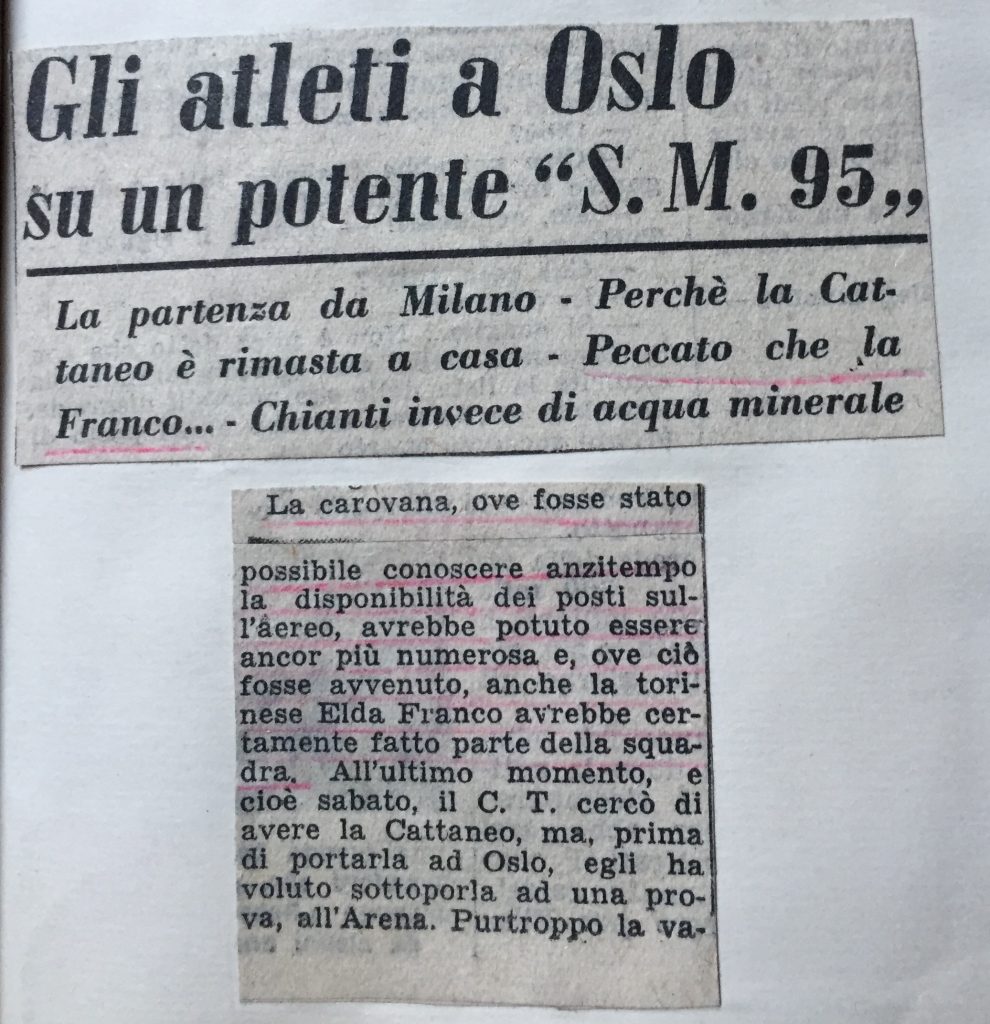
The FIDAL President Bruno Zauli gave an interview to sports newspaper Tuttosport supporting this rendition. Then something surprising happened: the trainer of the women’s National Team, Lydia Bongiovanni, picked up her pen and wrote a letter to Tuttosport. What else could we expect from the same woman who had faced the Nazis in her bosses room, one year before (see https://bit.ly/3stxkSf )?
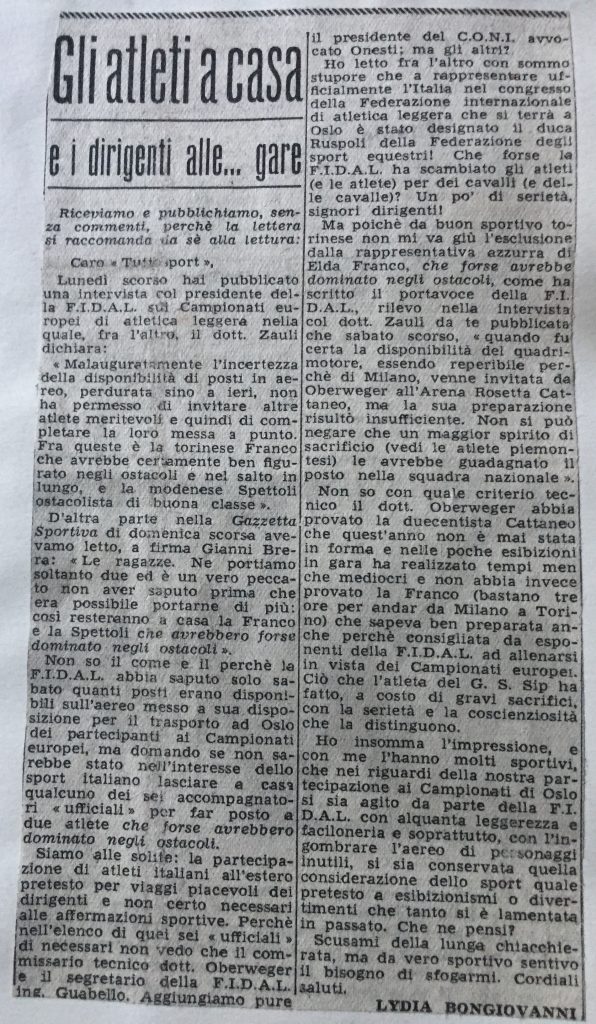
Recalling the whole story, Lydia wonders whether it was good for Italy not to call two hurdlers such as Elda and Spettoli, who could compete well, according to the opinion of Gianni Brera (the most important sports journalist of that time). It was the same old story: trips abroad weren’t meant for athletes, but for the pleasure of sports managers. Complaining about the six male managers, Lydia writes that three of them (trainer Oberweger, FIDAL Secretary Guabello and CONI President Onesti) were necessary: but what about the remaining three? Lydia accuses the Duke Rispoli, President of the Equestrian Sports Federation, who was called to represent Italy in a assembly in Oslo: ‘Did FIDAL mistake male and female athletes for horses and mares? Dear Leaders, be serious!’. Then Lydia accuses trainer Oberweger, because on finding out there was a seat available on the plane, he called for a trail in Milan for the Milanese runner Rosetta Cattaneo, who was completely out of shape. Why didn’t Oberweger called Elda, who was ready in Turin, just three hours away from Milan?
This ‘real sports(wo)man’s’ outlet by Lydia Bongiovanni, as she defines it in the last paragraph, is a very interesting historical document. It confirms that nothing, in the democratic Italy after the Fascist regime, really changed: politics and sports were deeply linked, and the patriarchal power still ruled over female athletes, mistreating them and their sacrifices. Defending her young friend Elda as she did some months before during the Resistance, Lydia carried on her fight for justice: and she did it publicly, naming names! Of course such a rebel attitude couldn’t be ‘allowed’ for a long time: so it was no surprise when Lydia Bongiovanni some time later lost her role in the women’s National team …
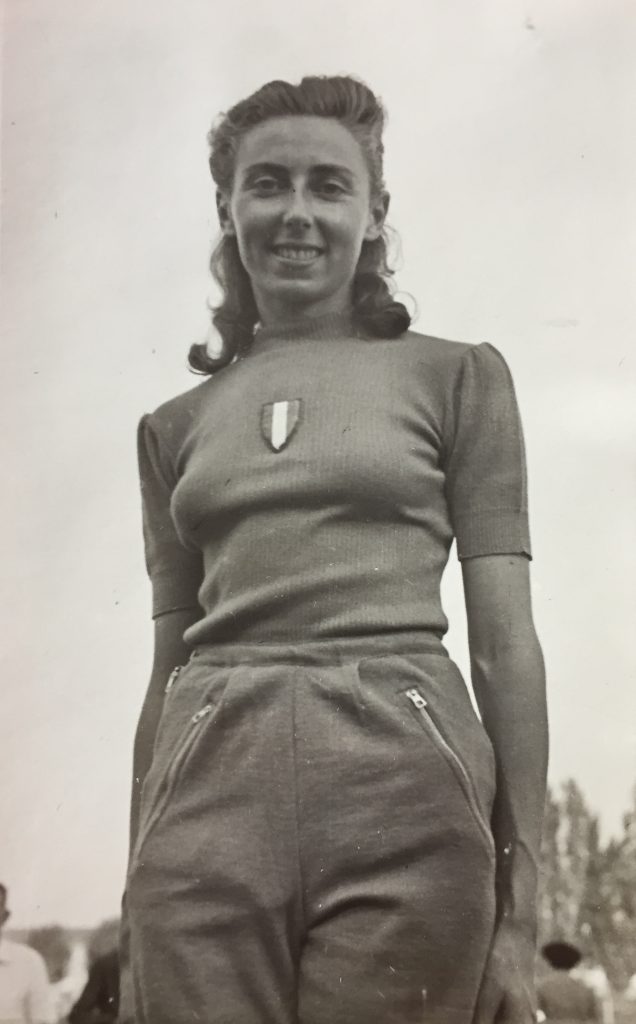
Elda,the Italy National Team member (Turin, 15/09/1946).
In September 1946 Elda had the chance to show everybody her value, and her courage too: the Turin meeting against Austria was the National team’s first international meeting. Elda was called to compete in three different events. In first of them, “her” 80m hurdles, she fell and badly bruised, finished last. In spite of this she carried on and won the long jump in 5,38m, surrounded by a cheering crowd, and finally she was placed 4th in the high jump, gaining 1 precious point for the final victory (44-40).
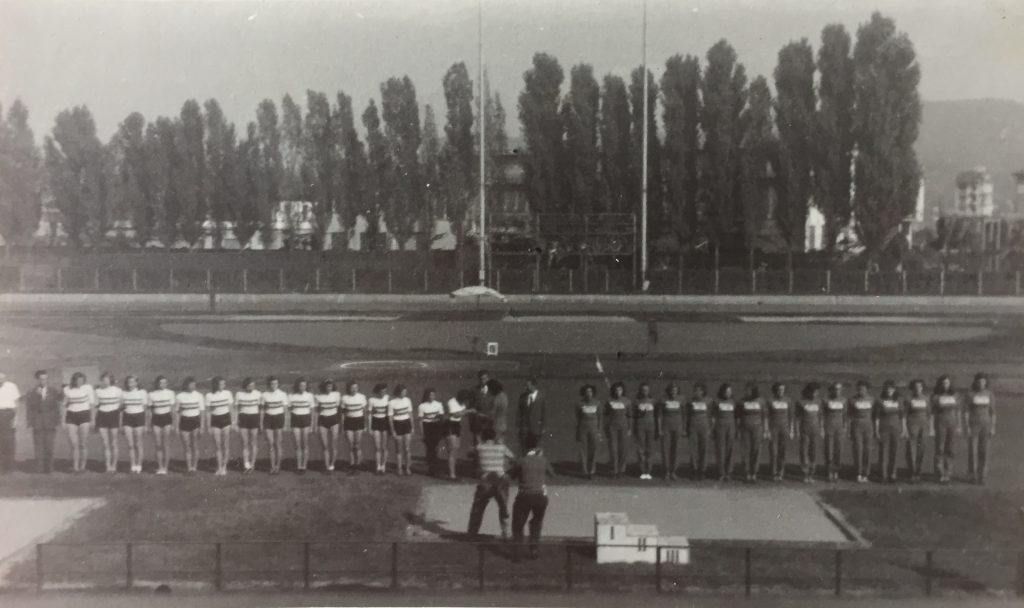
The opening ceremony of Italy – Austria (Turin, 15/09/1946).
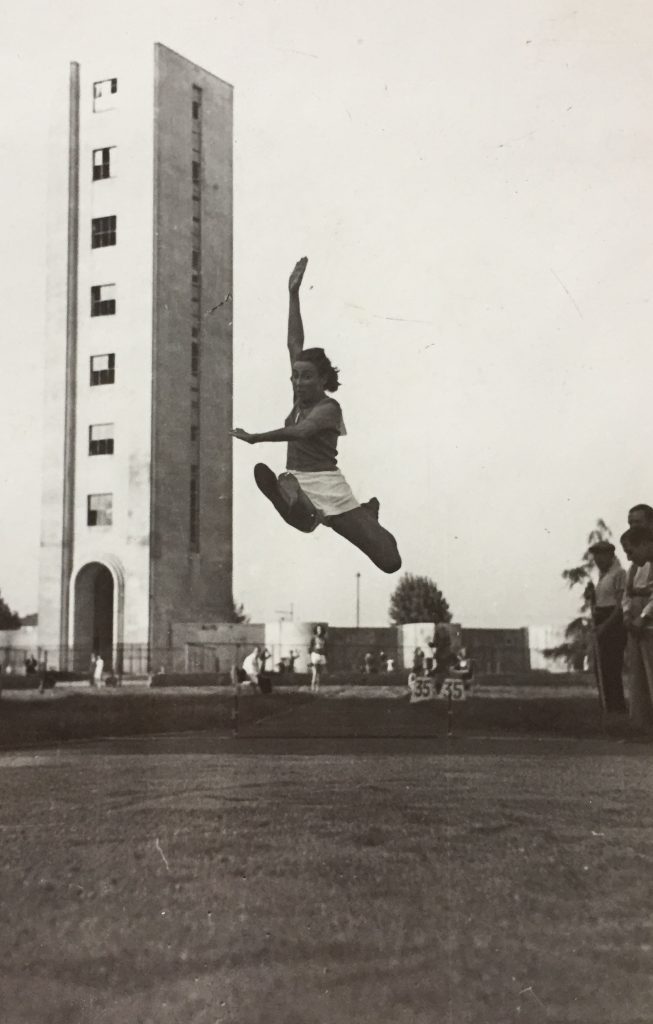
Elda during the long jump event.
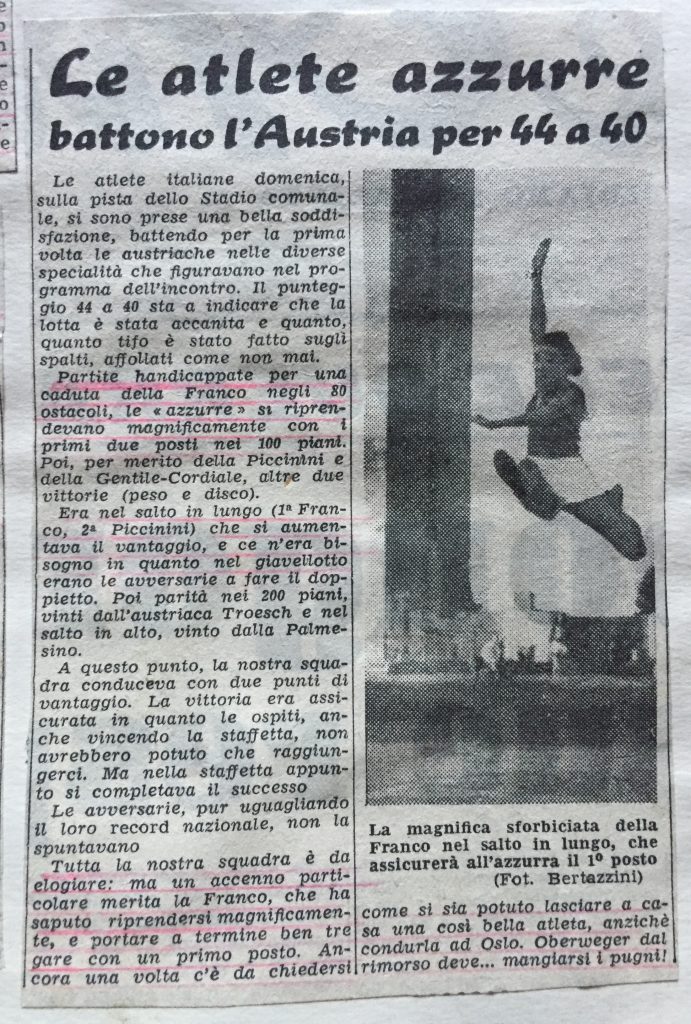
At the end of this clipping, after praising Elda’s brave performance, the author writes:
we’re all still wondering why Elda wasn’t called for the Oslo Championship. Oberweger should … kicking himself with remorse ….
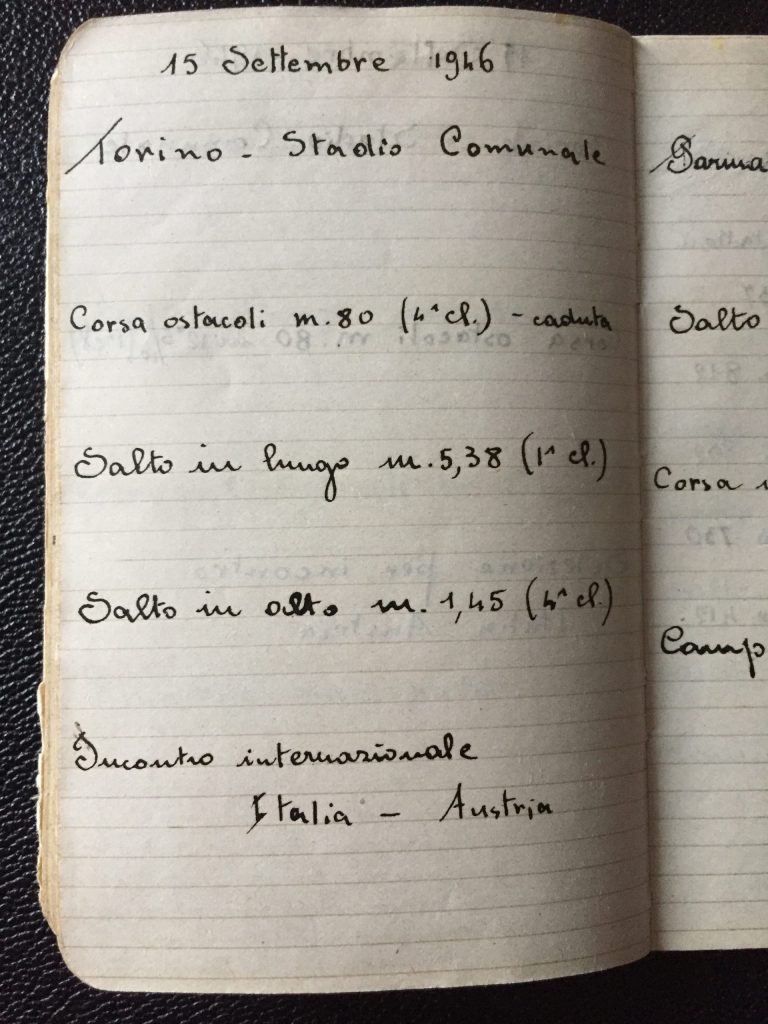
The Red Notebook page about Italy – Austria.
On the return meeting in Vienna (August 9th, 1947), Elda won the 80s hurdles, and the bronze medal in the long jump. Despite Elda’s effort, Austria defeated Italy (48-36).
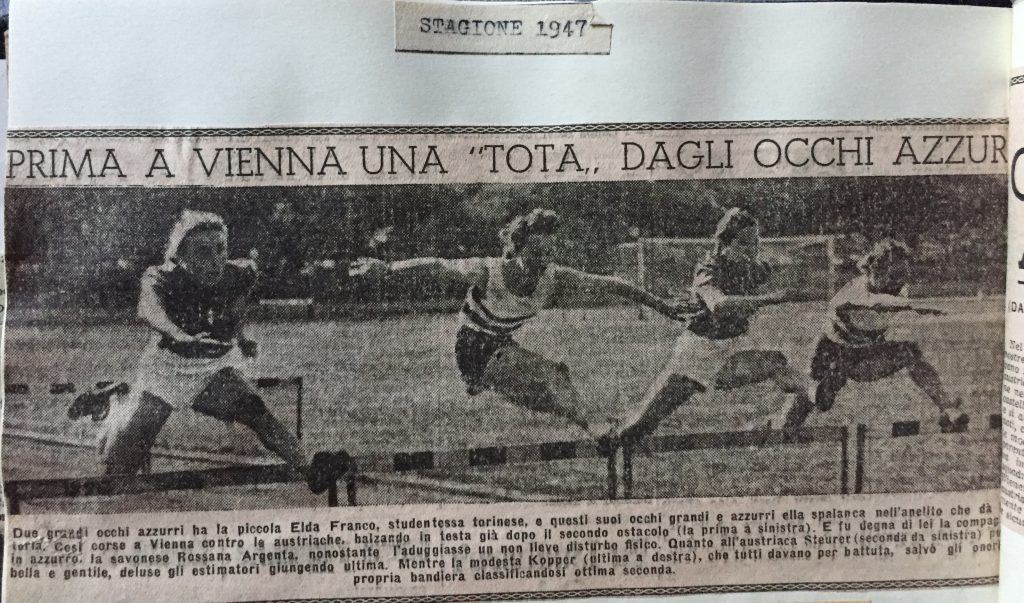
The title says: ‘First in Wien a blue-eyed tota’, the Turinese dialect term for ‘girl’.
That Summer 1947 was very full, for Elda! Although she wasn’t an actual university student, she competed in the 9th edition of the University World Games, held in Paris in late August: she won two silver medals (80m hurdles and long jump), one of the few gained by the Italian athletes.
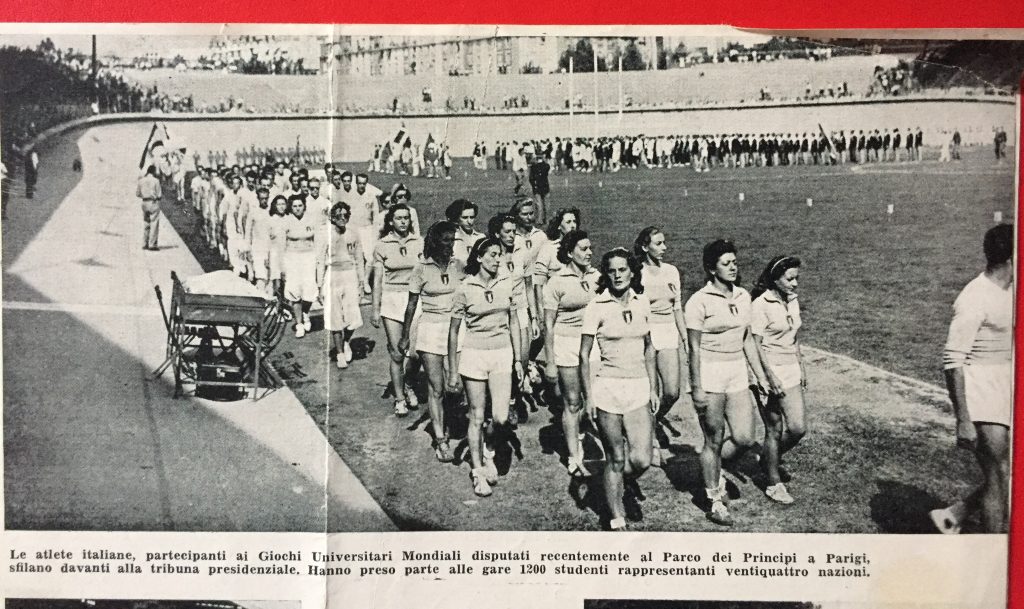
The Italian athletes in Paris (1947): Elda is the 3rd from the left in the 2nd row.
The University Games in Paris were the occasion for a bizarre but very interesting article, published by a French magazine under the caption “Franco at the bedside of Tito”. The author supposed that Elda Franco cared for a sick Italian athlete whose surname was Tito – and he obtained a picture obviously posed by both of them! Still, the article is very interesting because, under the humoristic surface (the reference to the Spanish and Yugoslavian leader Franco and Tito), the journalist really tried to discover something about Elda’s identity. Defined as ‘the best Italian hurdler’, the 23-years old Elda is praised for her girl next door charm which would heal her male peer Tito (from Trieste), and for her thrift too – with the small fund offered by the Italian Federation, she bought only one belt. The journalist wrote clearly that Elda, who was a Communist, ‘had been a “partisan”: during the war, she fought to free Italy’, while Tito, officer of the Italian Army on the Yugoslavian Front, was imprisoned after the armistice and then sent off to Vienna, not declaring himself as a Fascist. Asked about her opinion about Trieste (the city which was still disputed between Italy and Yugoslavia), Elda says: ‘Trieste has an interest in remaining a free city. In Italy, those willing the annexation of Trieste to Yugoslavia are Communists, while those willing the same of Italy are old Fascist’. Such a deep opinion, in contrast with Tito’s, who tried not to take a position: ‘Trieste? I’m still an old officer. An official must not to have a political opinion. I comply …’. What about Elda’s future? ‘She hoped to end her Political and Commmercial Economics courses. It’s three years since she became engaged. Her happiness would be to marry – after the Olympic Games, if she could qualify -, and then to become a mother’.
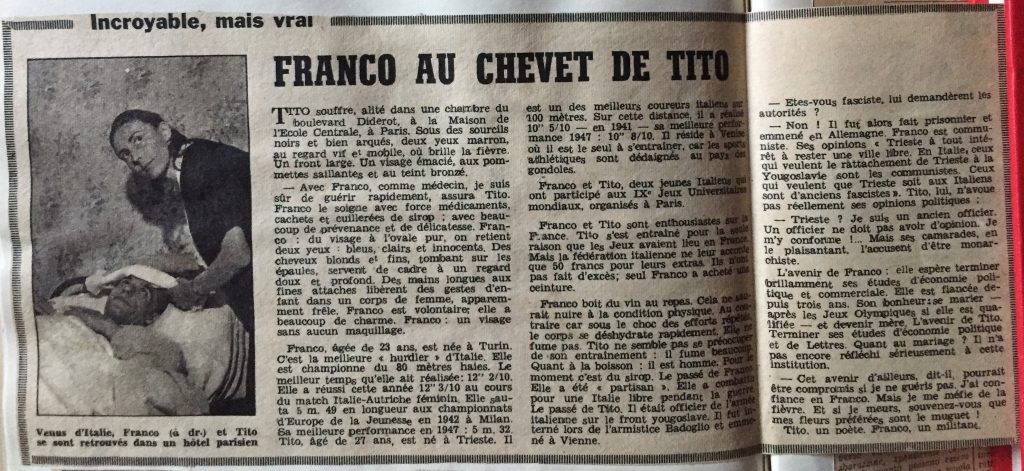
The French article about Tito and Franco.
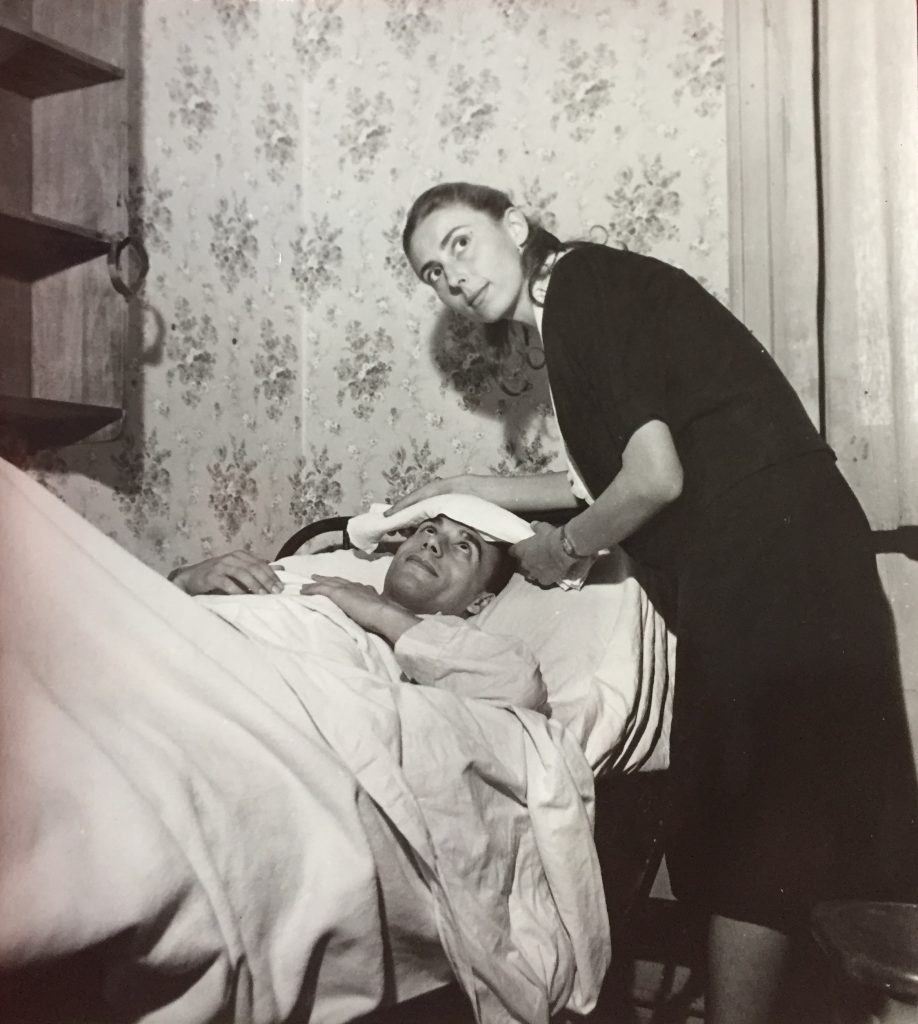
Tito and Elda Franco (Paris, August 1947).The original photograph: very nice, but clearly posed for the camera
Elda’s Olympic dream would never come true: despite her participation in the trials as she failed to meet the qualification time.
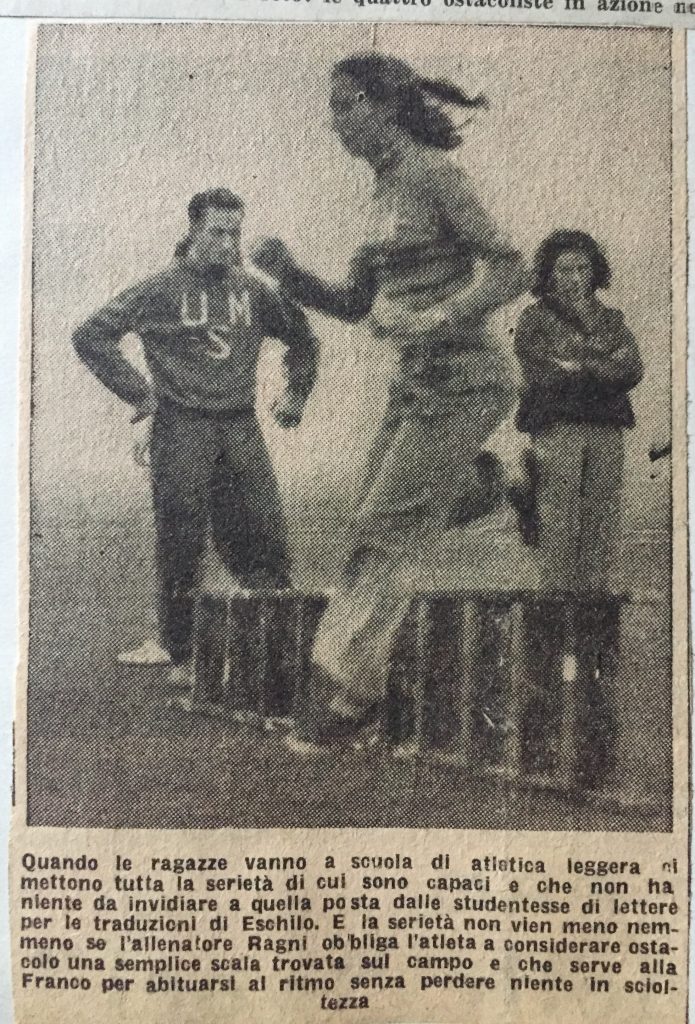
Elda during the Olympic trials.
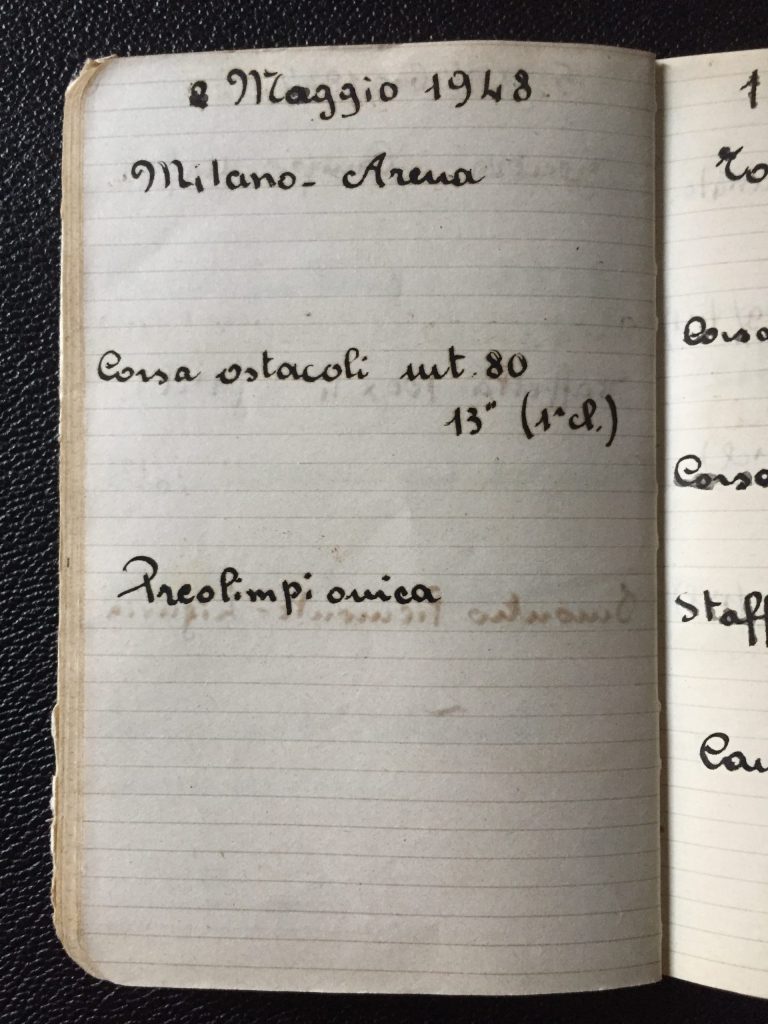
In the last Olympic trials (May 1948), Elda ran the 80m hurdles in 13’’
The slowest time in 1948 London Olympic Games heats was 12’’ 6/10, by US hurdler Hean Walraven …
On September, 14th 1947, the Italian athletes welcomed their Czechoslovakian opponents for a new international meeting. Did the Italians have chance to became friends with any of these women?
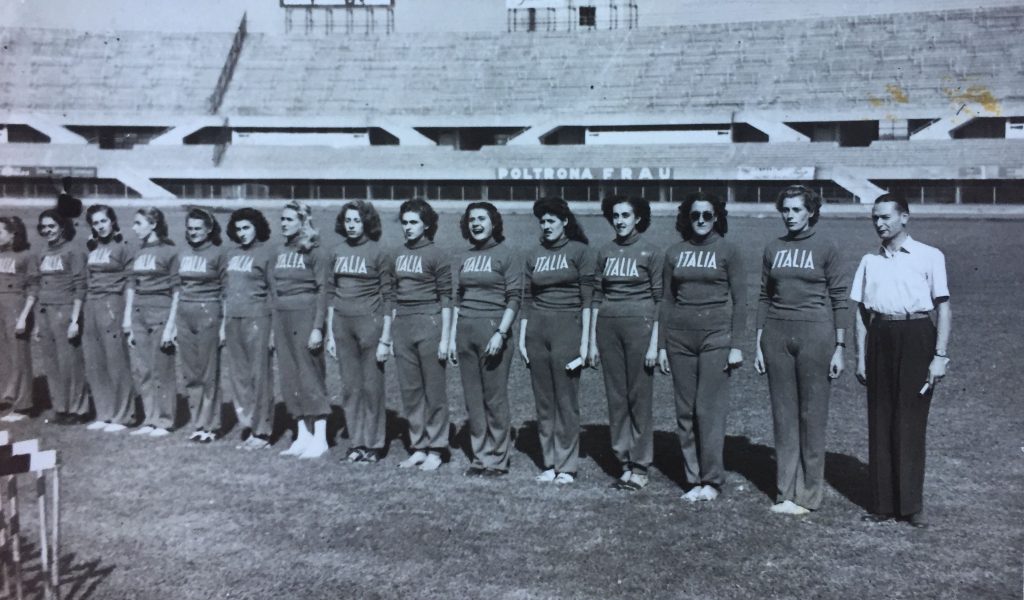
Italian National Team during the opening ceremony (Turin, 14/09/1947)
Elda is the 4th from left, Gabre Gabric the athlete standing next to the male trainer
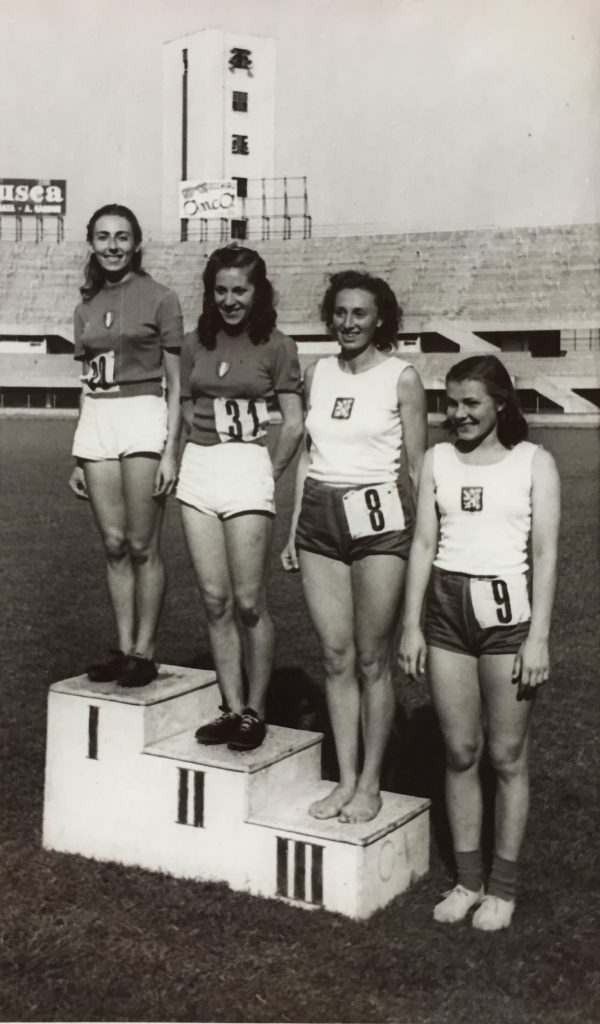
The 80m hurdles podium during the Italy – Czechoslovakia meeting (Turin, 14/09/1947)
From left: Elda; Argento; a barefoot (!) Marie Matesová; Piskova.
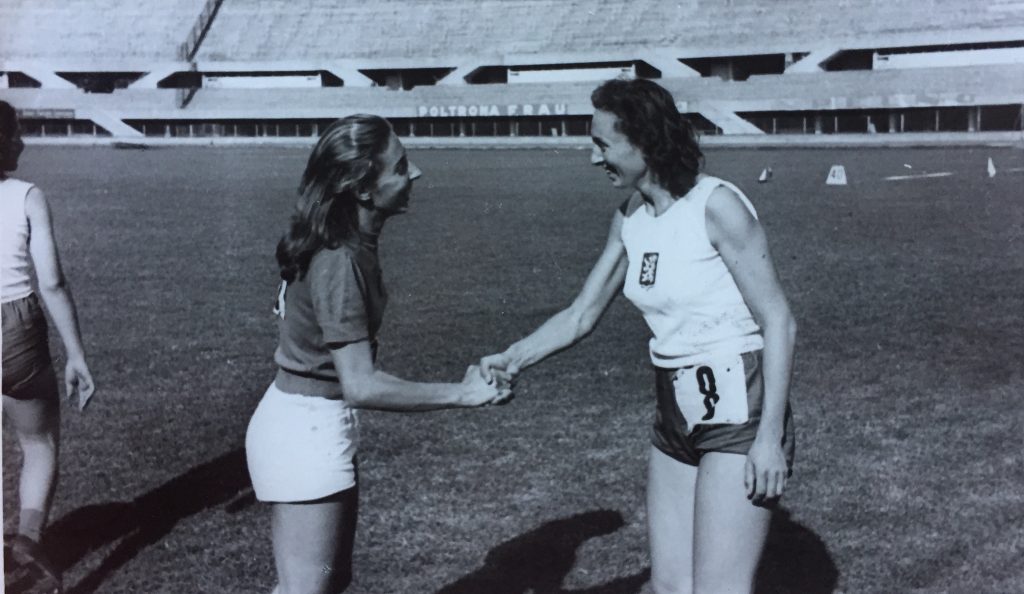
Elda and Marie Matesová greeting each other
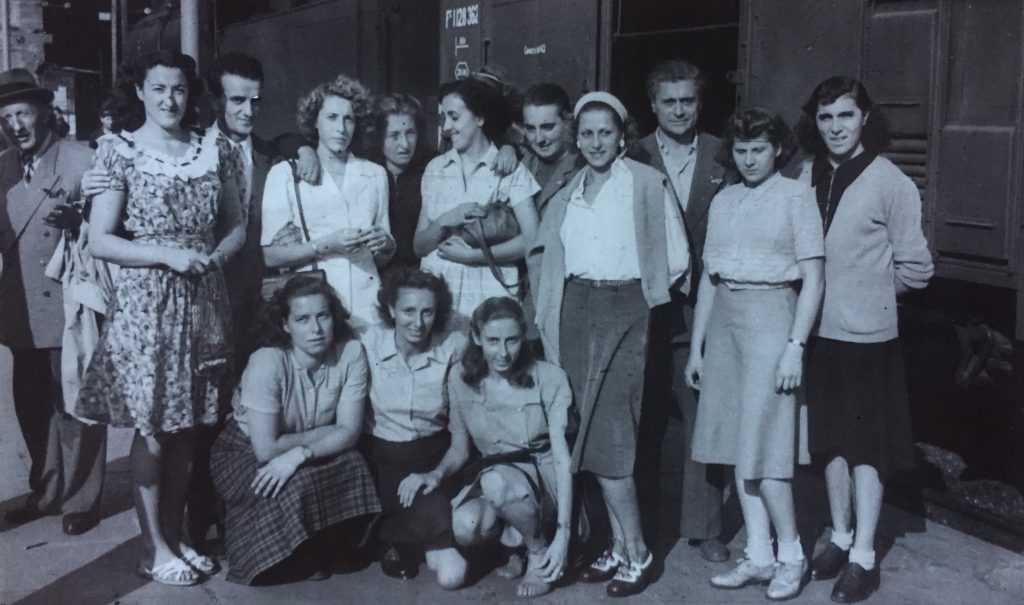
Italian and Czeckoslovakian athletes together at the train station, probably for the departure of the hosts
Marie Matesová (kneeling, 2nd from left) is besides Elda (3rd).
One week later, Elda competed at the National University Championship in Merano/Meran, probably with CUS Torino.
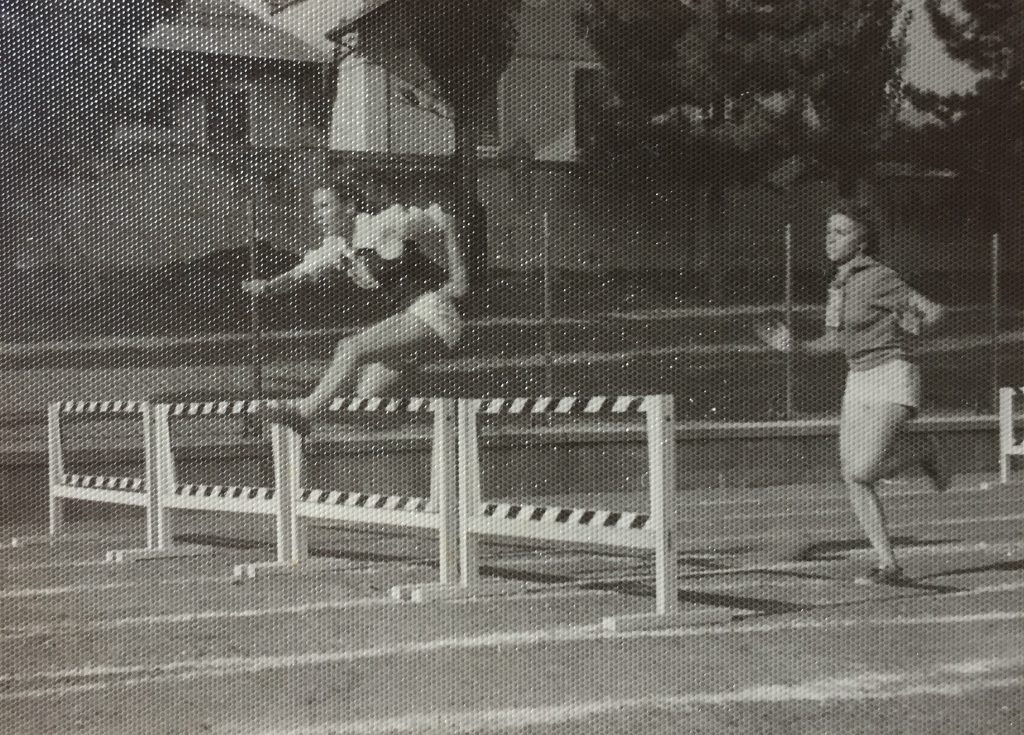
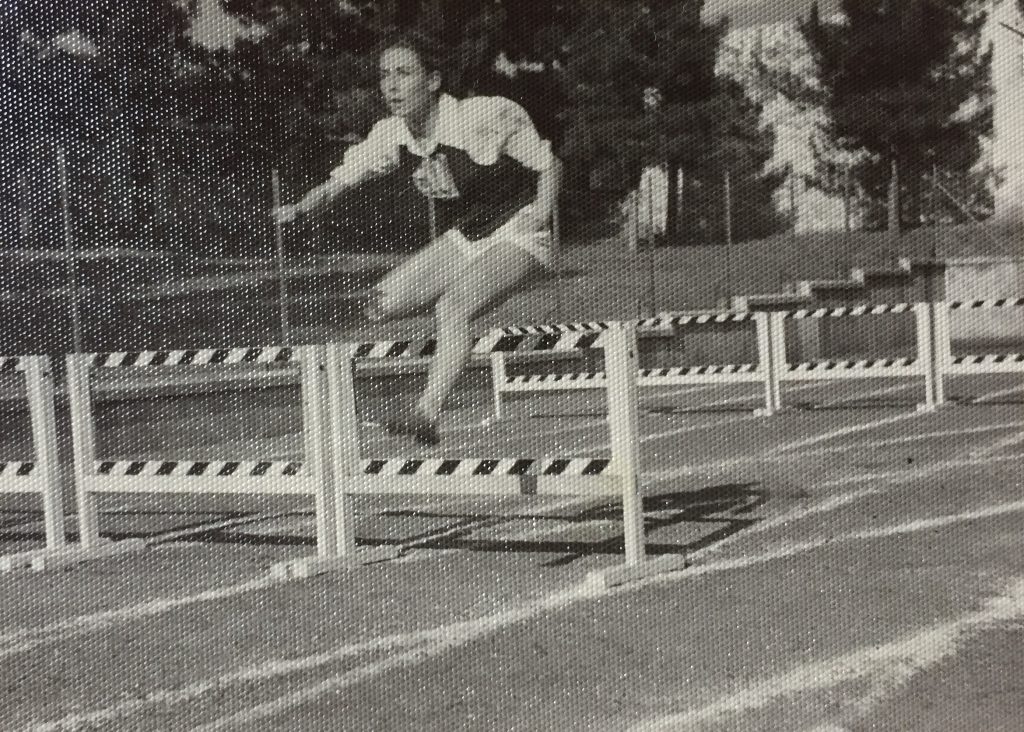
Elda competing in Merano (21/09/1947).
Because of a SIP crisis, in the late 1940s’ the now dark-haired Elda and her team mates moved to a new sports club, called SIPRA.
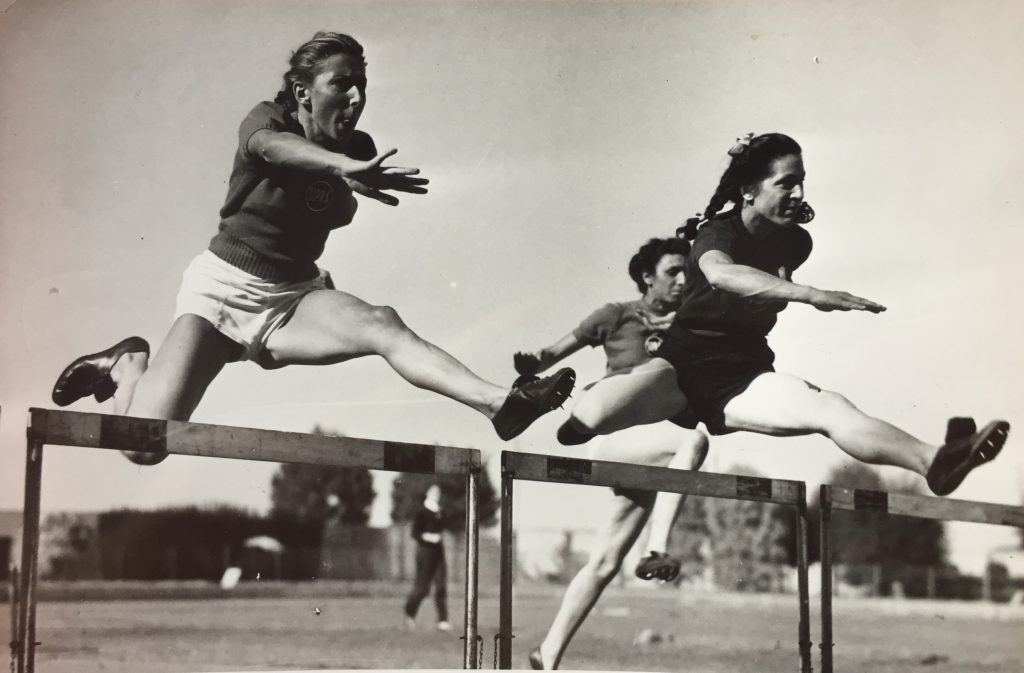
Elda during a 80m hurdles, with the SIPRA shirt (1948, or 1949).
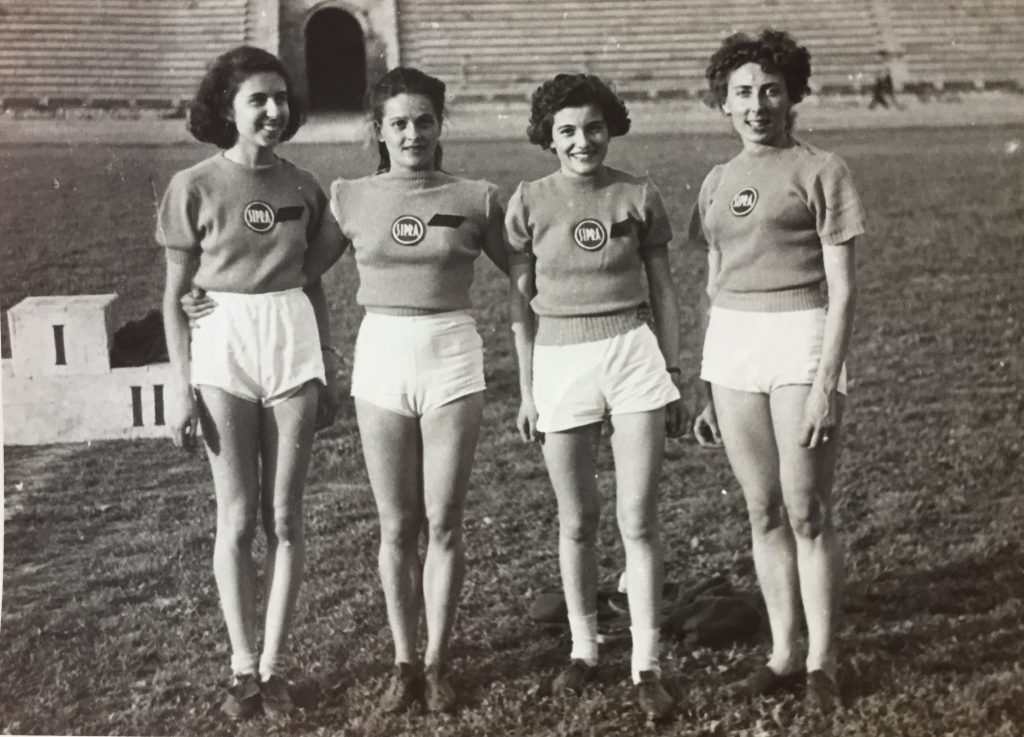
Elda (4th left) and her SIPRA team mates (Milan, 05/06/1949).
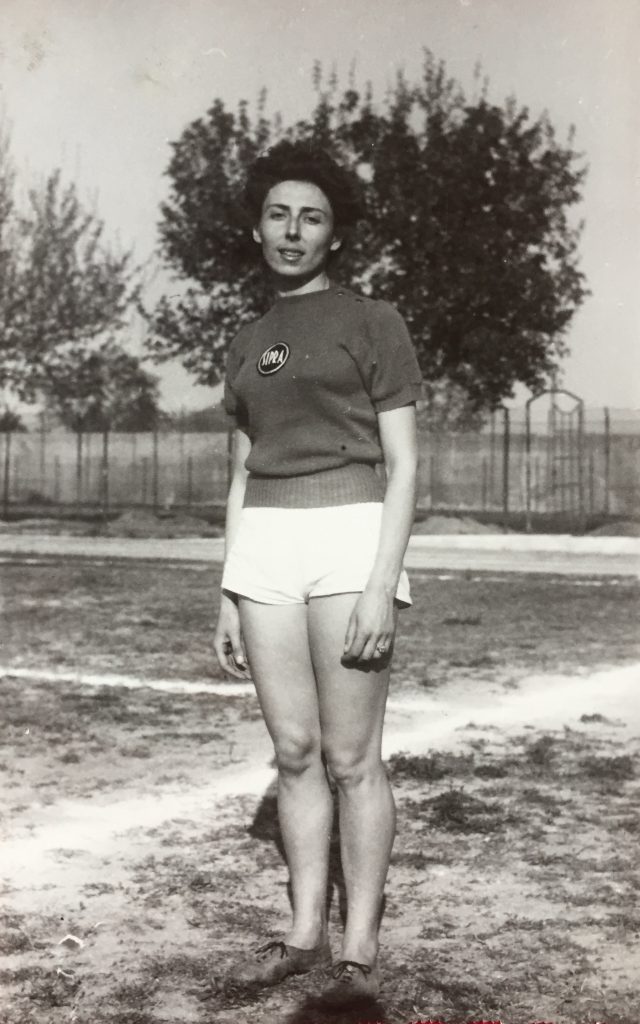
Elda wearing her SIPRA shirt (Albenga, 18/04/1949).
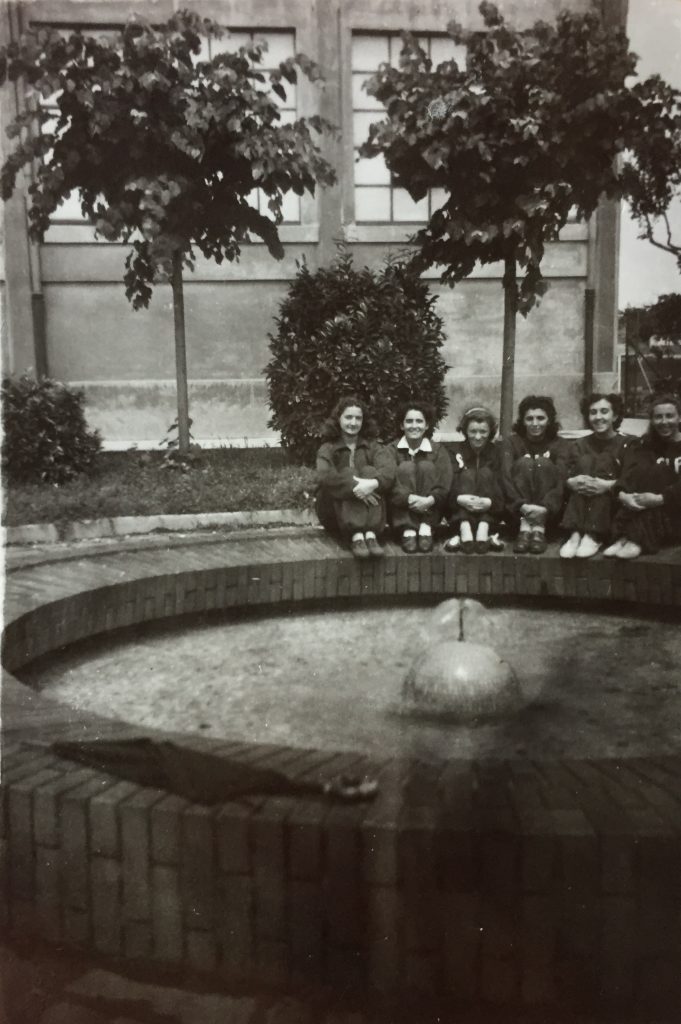
Elda with her team mates. She’s still wearing a SIP tracksuit (1949).
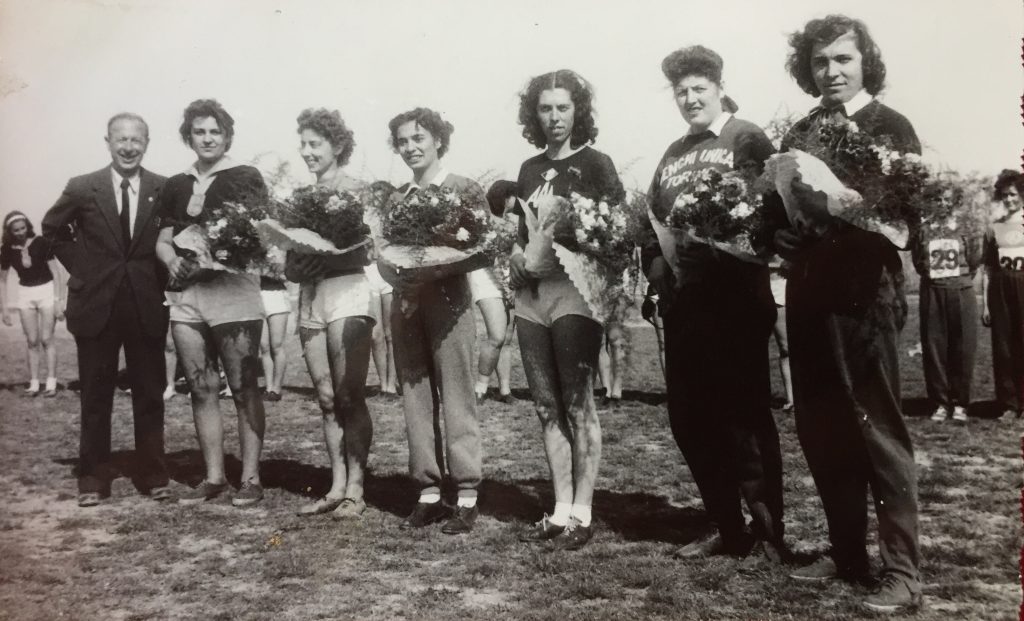
A sports manager, and then 6 female winners (1949)
Elda is the 2nd athlete; Elena Cordiale and Amelia Piccinini the last two.
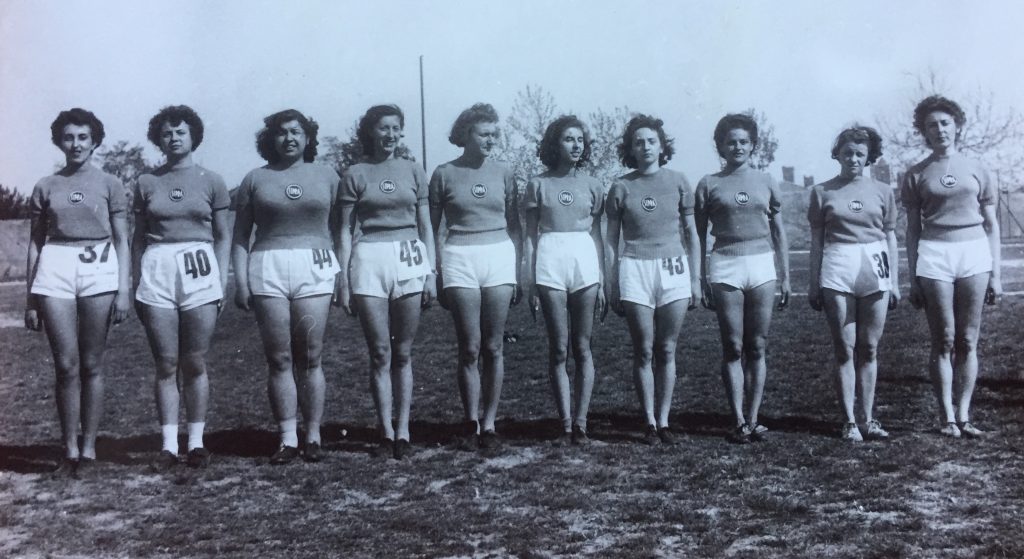
Elda (the 1st right) and her SIPRA team mates (Albenga, 18/04/1949).
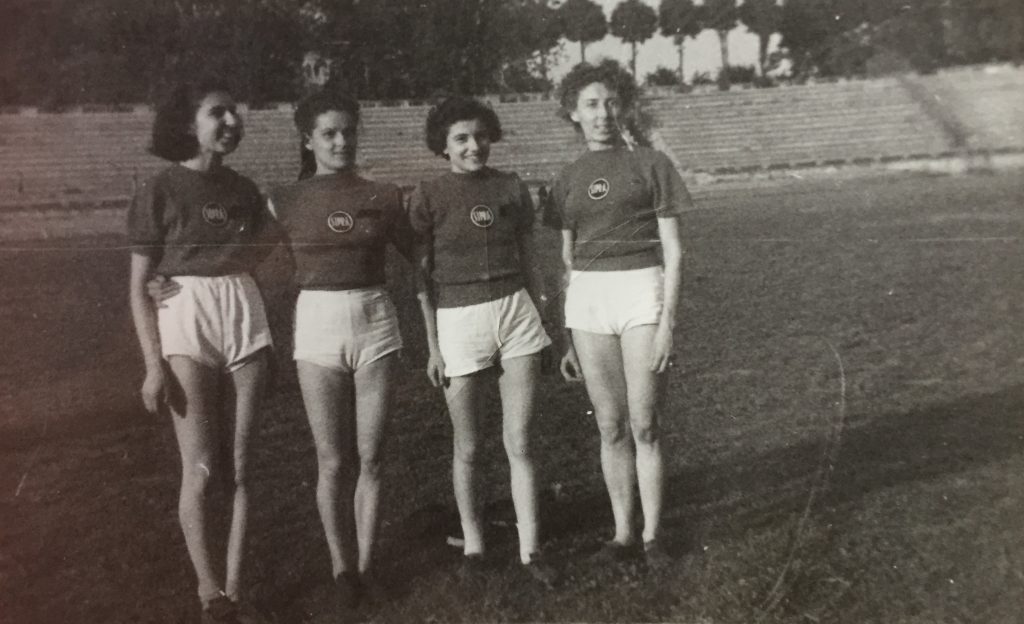
Elda and her SIPRA team mates in Milan (05/06/1949).
In July 1949 the Italian atheltes went to Rotterdam. Elda spent most of her time watching life off the athletics field: she and her team mates were young tourists in a foreign city …
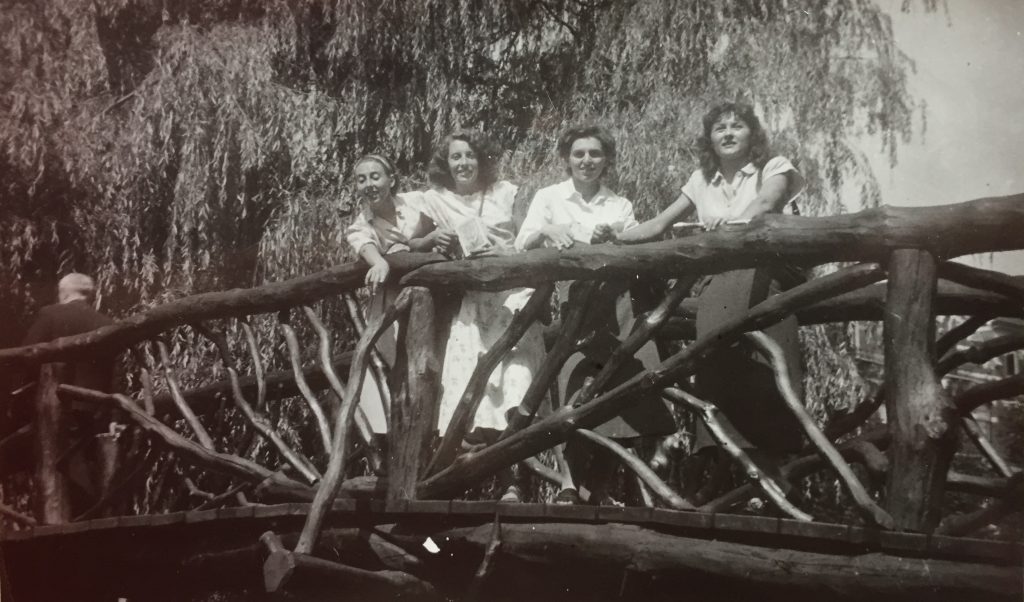
Elda and 3 Italy National Team mates in a park (1949).
- Elda and her Italy National Team mates in front of a fountain (1949).
As a clipping says, the first thing the Italian athletes did when they reached the Netherlands was ask about Fanny Blankers-Koen, the famous Dutch athlete who had won 4 gold medals one year before at the London Olympic Games. Elda succeeded in having a photo taken with her
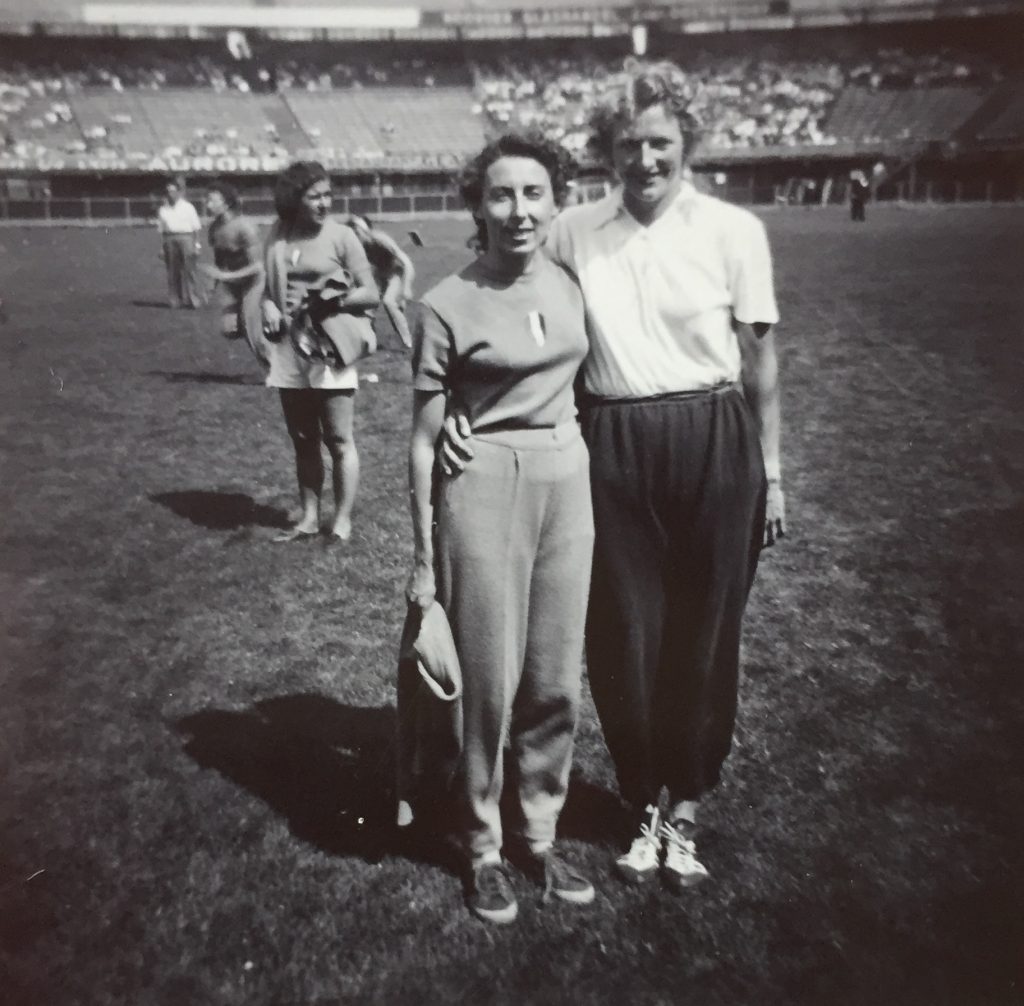
Elda and Fanny Blankers-Koen (Feyenoord Stadium, Rotterdam, 24/07/1949).
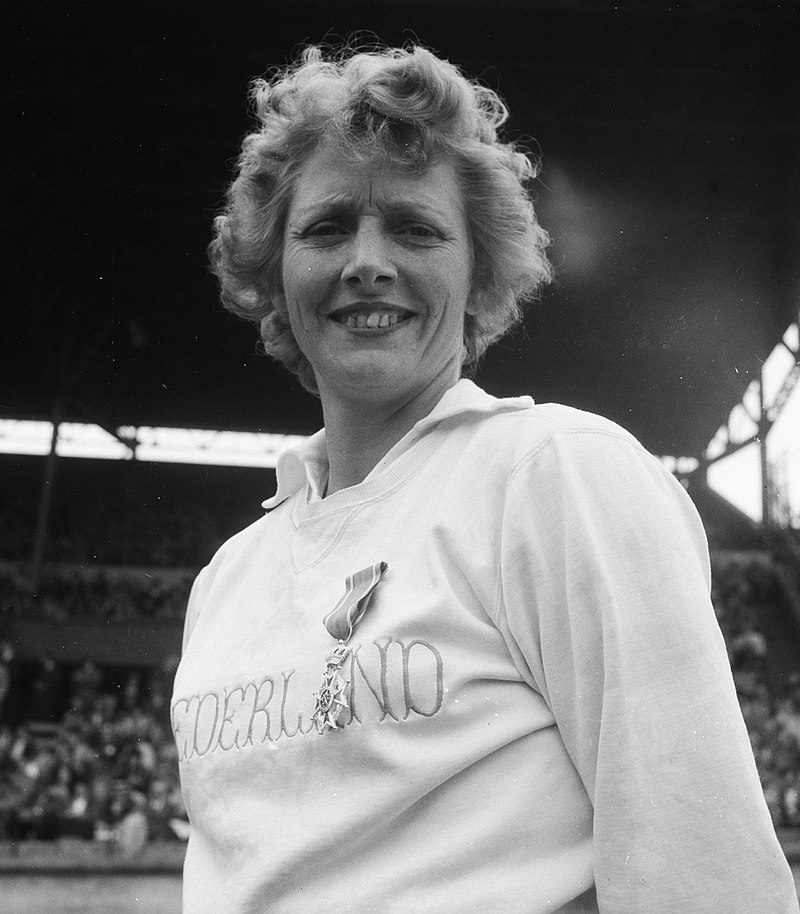
Fanny Blankers-Koen, in June 1949
Source: https://it.wikipedia.org/wiki/Fanny_Blankers-Koen .
Elda’s last appearance for the Italian National Team was the return meeting with the Czechoslovakian athletes in Zlin. After the takeover of the Communist party (Februray 1948), the state became a ‘peoples democracy’. Did Elda and her Italian team mates notice the changes, or did the differences from Italy looked even greater?
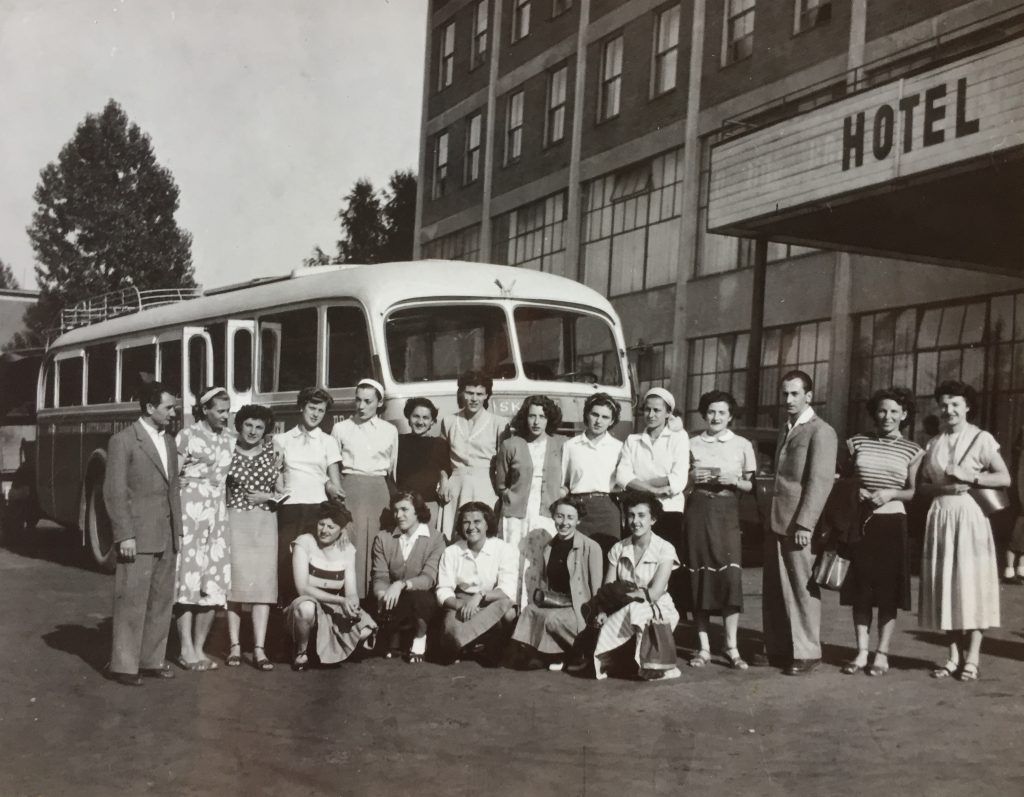
The Italian athletes in front of a bus and a hotel
Gabre Gabric is the 2nd (the 1st woman) standing from left. Amelia Piccinini (2nd from left) and Elda (4th) are kneeling.
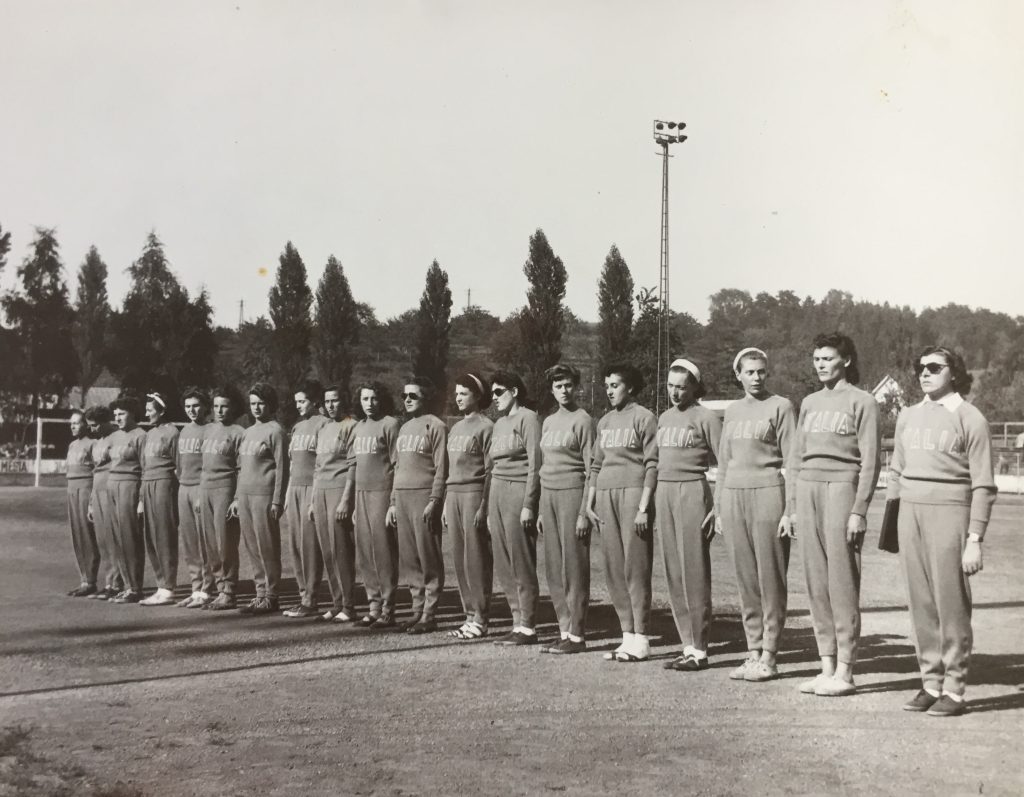
Italian National Team (Zlin, 07/08/1949)
Elda is 2nd from left; the last three athletes are the tall throwers Gabre Gabric, Giorgina Grossi and Amelia Piccinini.
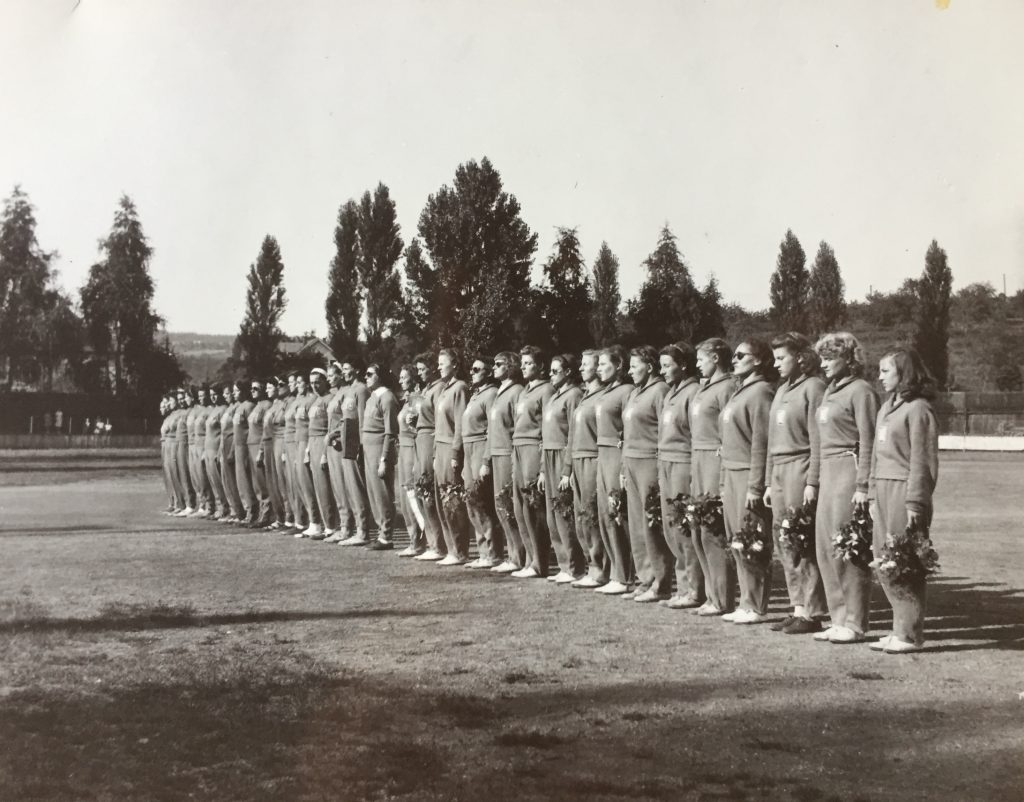
Italian and Czechoslovakian National Teams (Zlin, 07/08/1949).
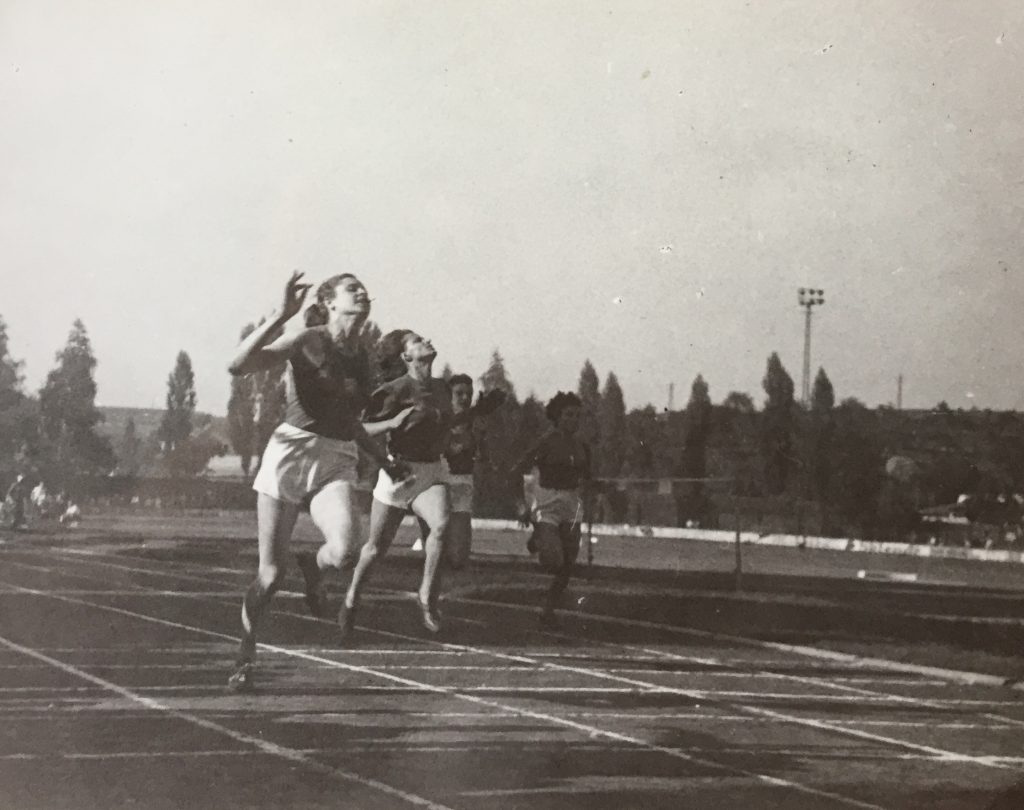
A sprint event during the Czechoslovakia – Italy meeting (Zlin, 07/08/1949
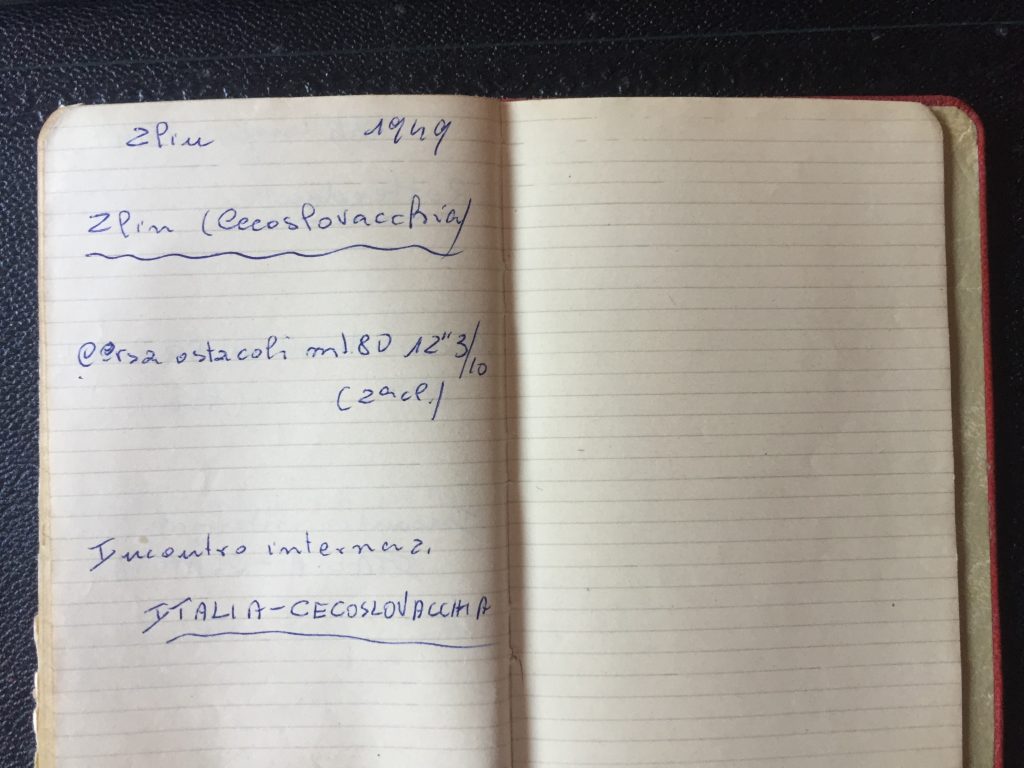
The last (written) page of the Red Notebook
On the very last page of the Black Book there are two clippings: they are both about Elda’s marriage (1949). The sports journalist praised her athletics career and wished her a happy future as wife and mother …
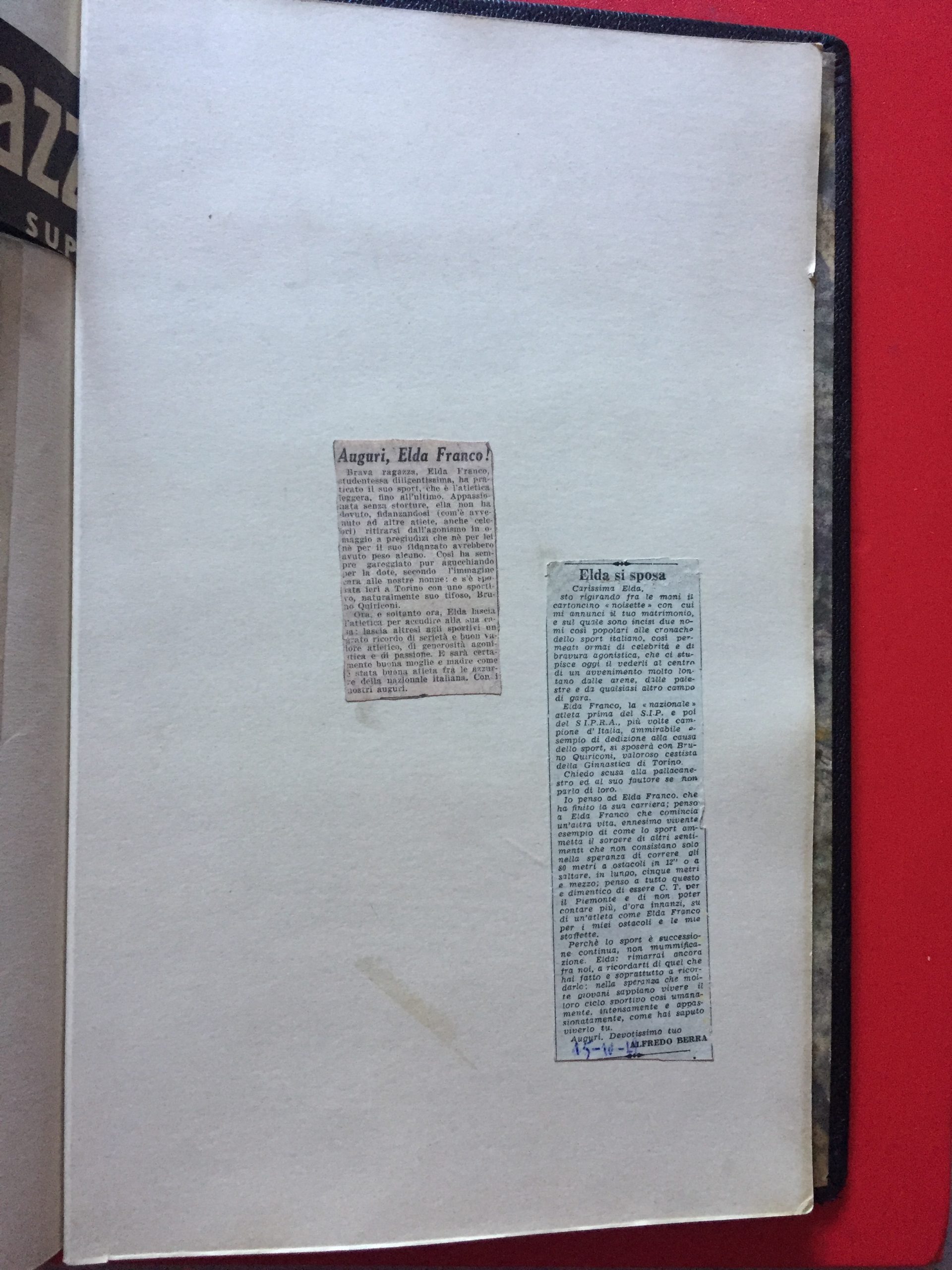
The last page of the Black Book.
Then Elda started a new life: except for some loyal friends, she quit athletics: not talking about was she had done during her youth. Yet sometimes she would ask her daughter Maura to take her by car to Turin, to see some old friends …
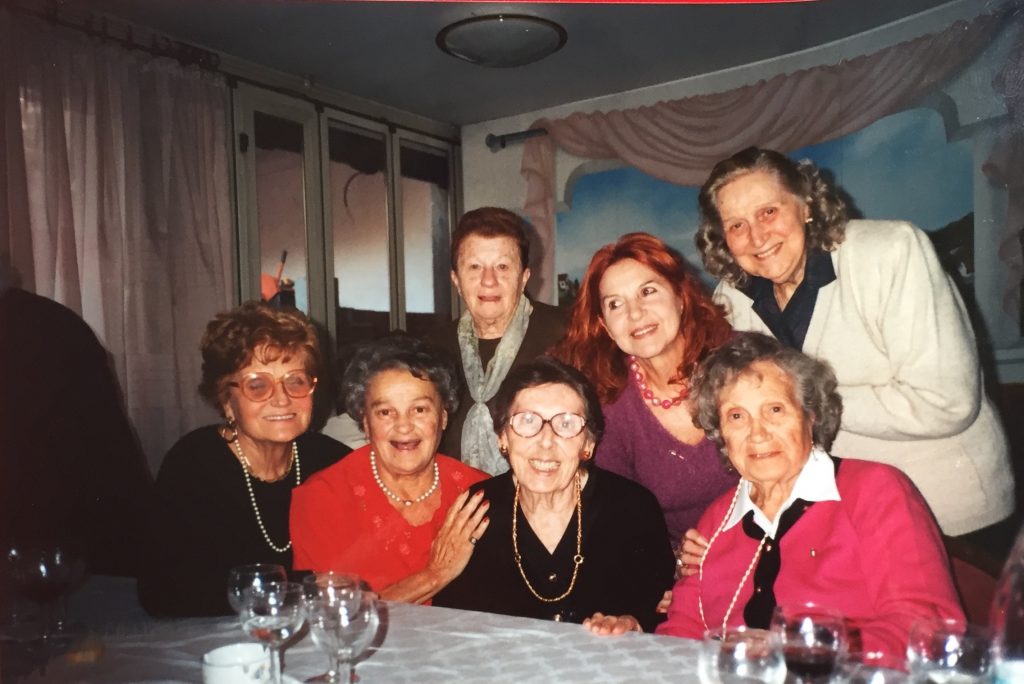
Elda (seated, 3rd left) during a dinner party with some ex athletes (Turin, 17/11/2001)
The 4th seated woman from left might be Fernanda Bullano.
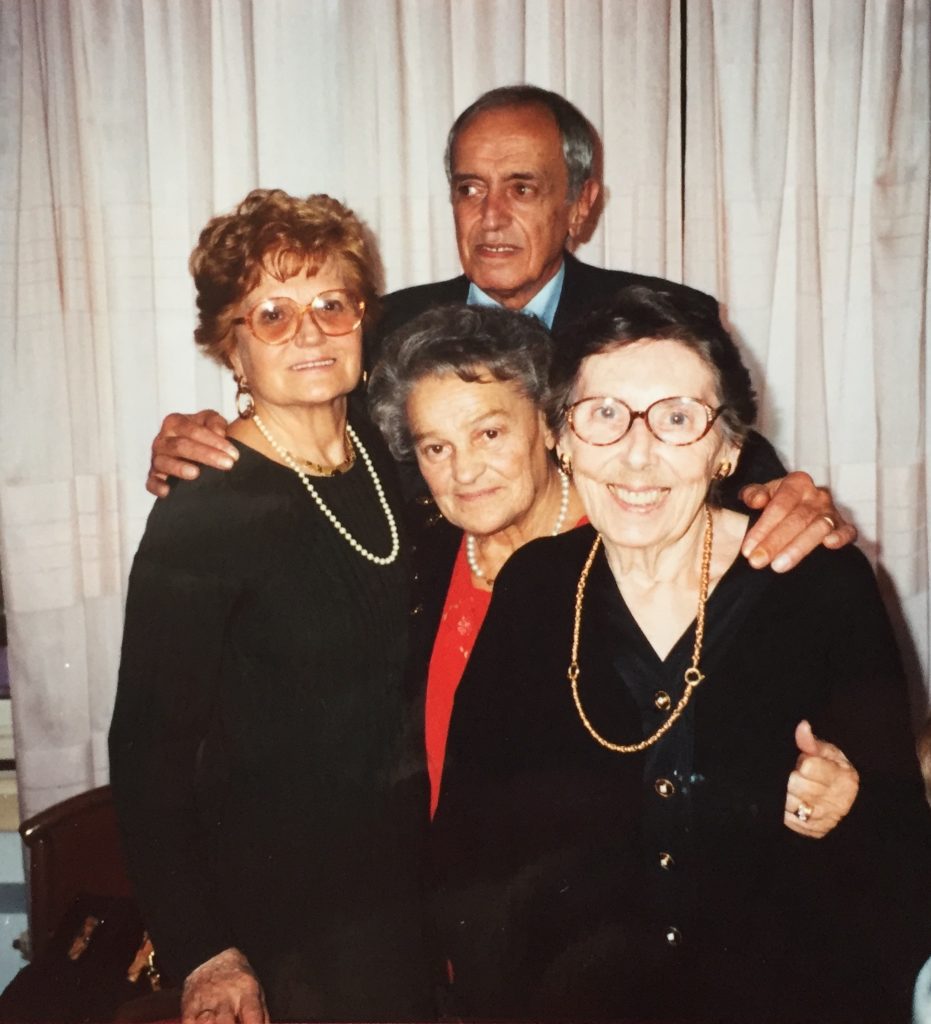
Elda (on the right) during a dinner party with some ex athletes (Turin, 17/11/2001).
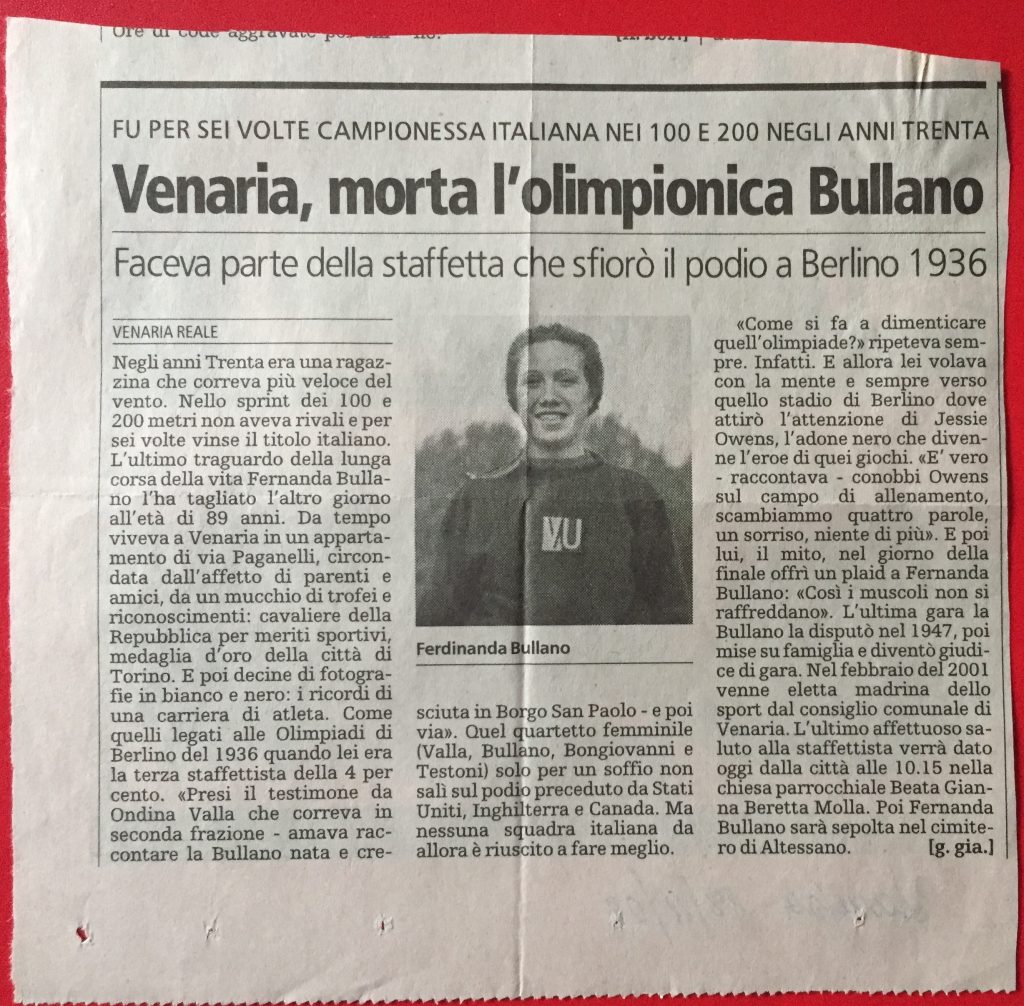
The clipping preserved in Elda Franco’s archive about the death of Fernanda Bullano (16/11/2003).
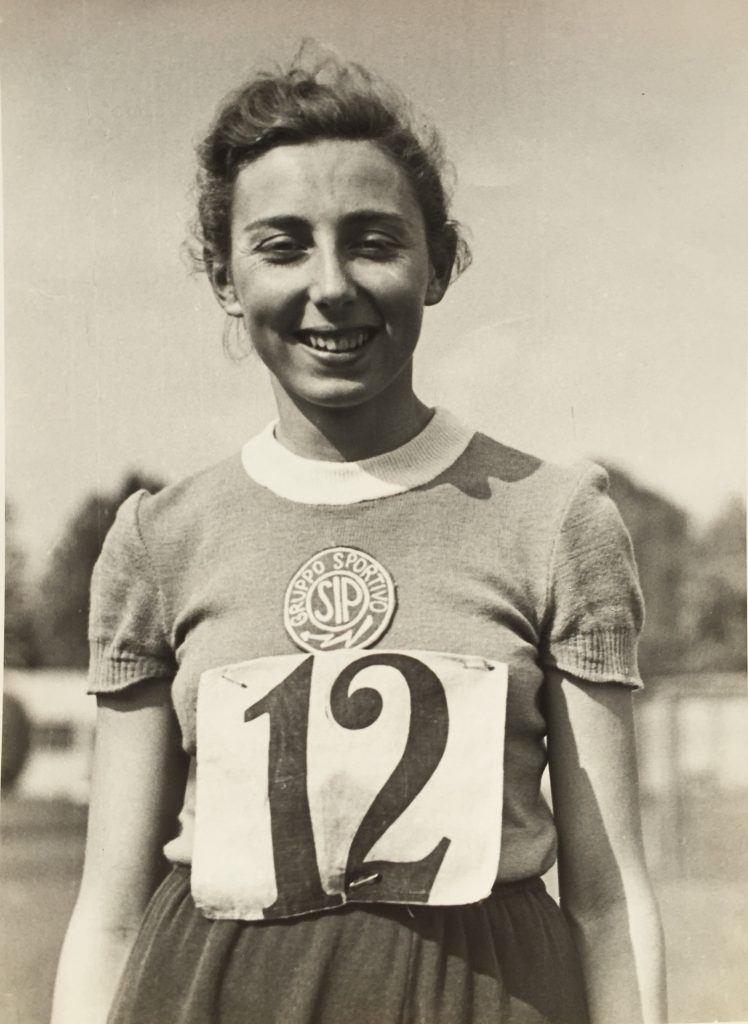
Elda during the 1940 edition of Coppa Principessa di Piemonte.
Article © of Marco Giani
For the complete digital edition of all Elda Franco’s picture preserved in her two photo-albums, see:
https://sorelleboccalini.wordpress.com/le-fonti_elda-franco_i-due-album-fotografici/
For all the clippings preserved in Elda Franco’s personal archive, see:
For more resources about Elda Franco’s personal archive, see:
For Italian sources about the carriers of Lydia Bongiovanni and Elda Franco, see:

